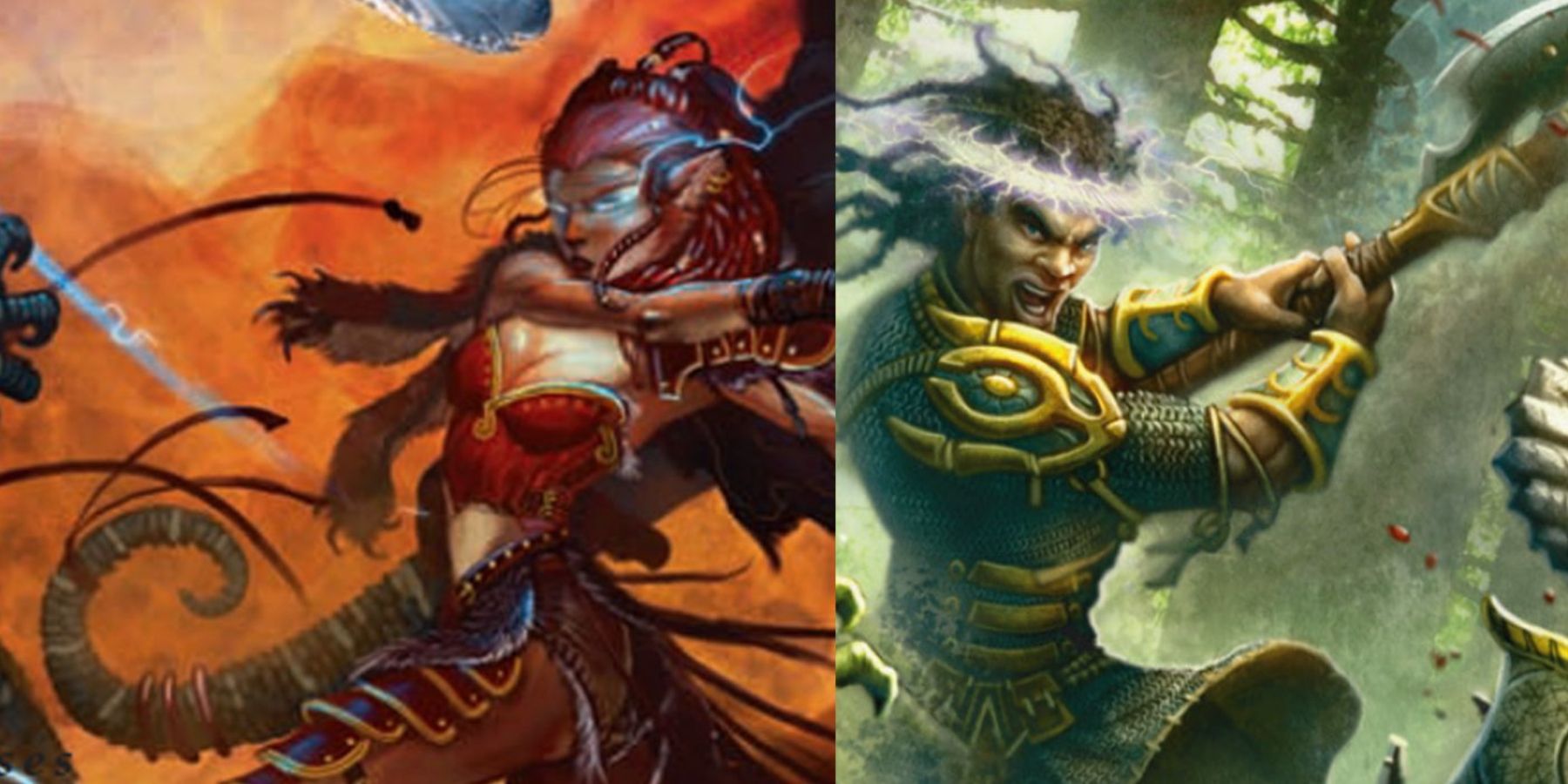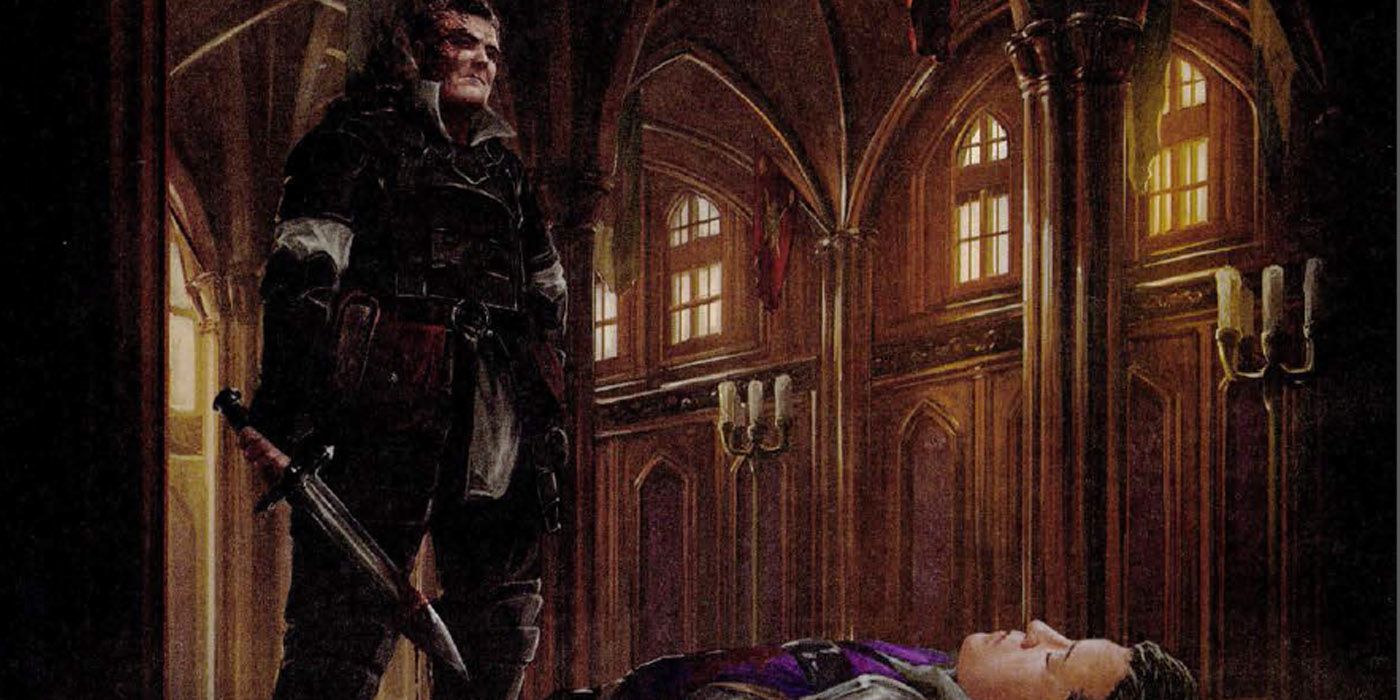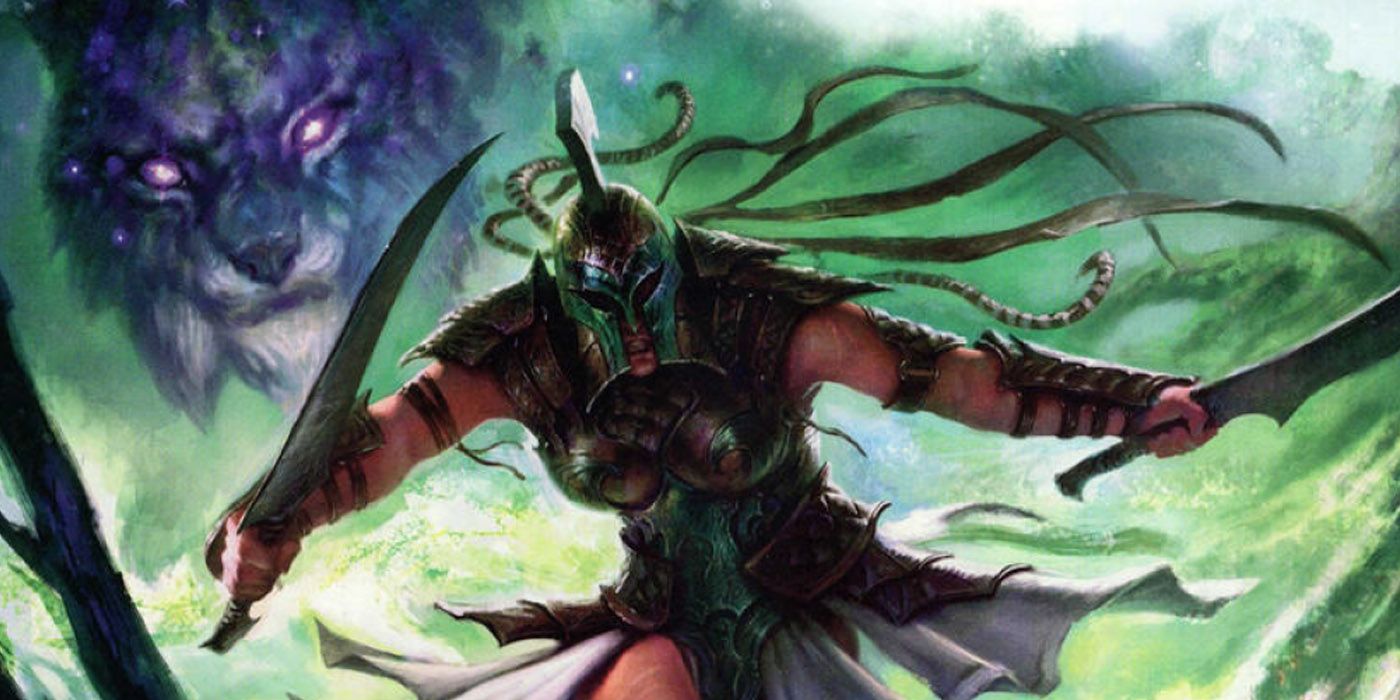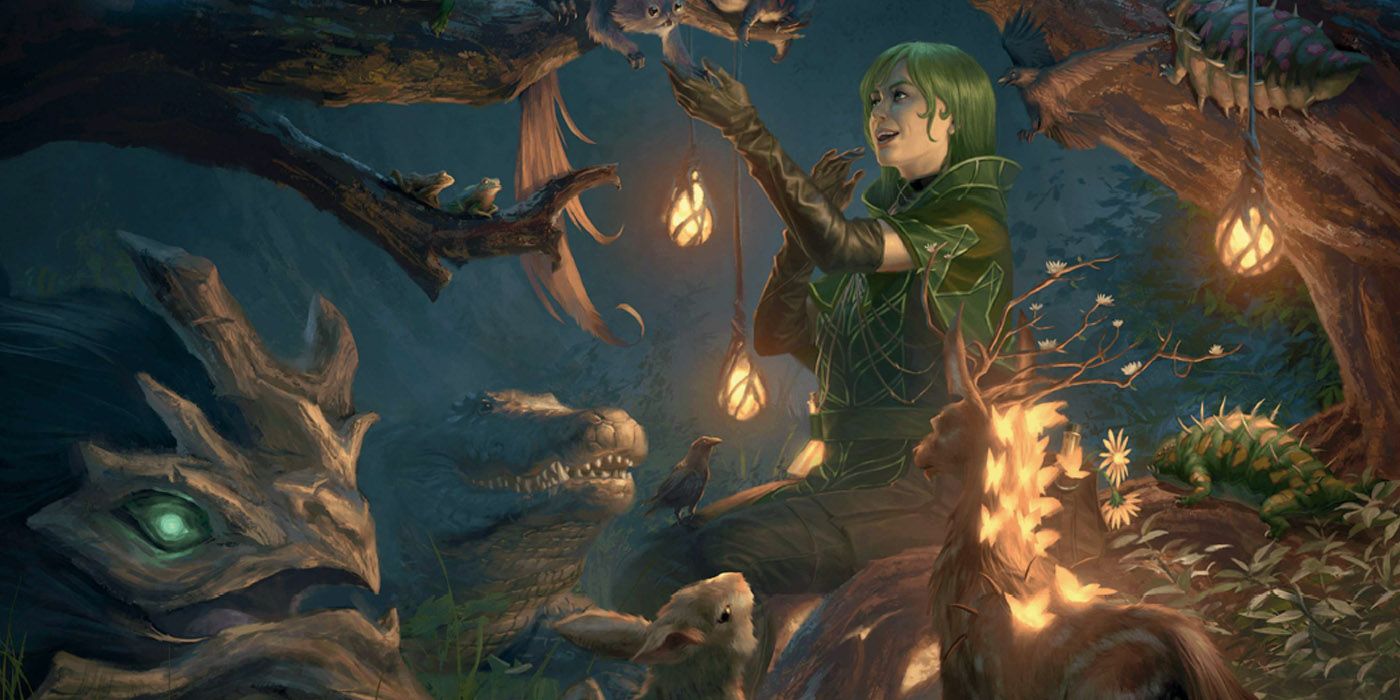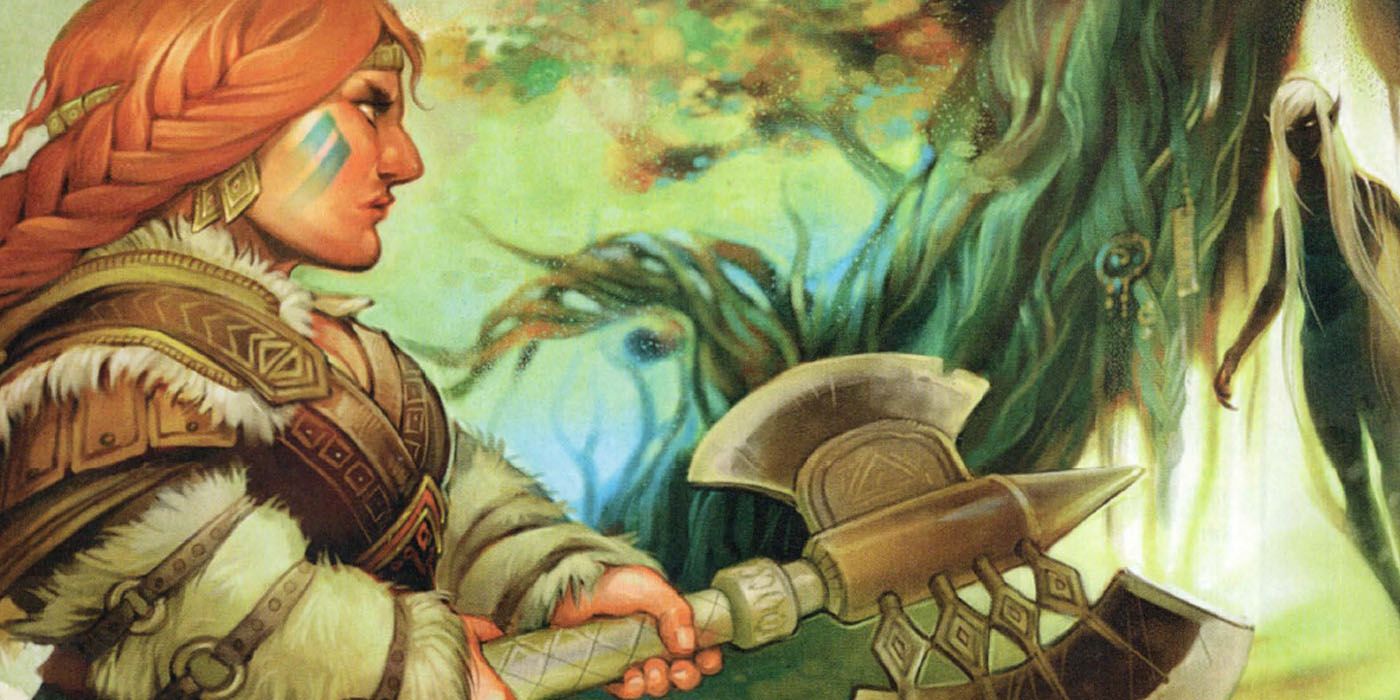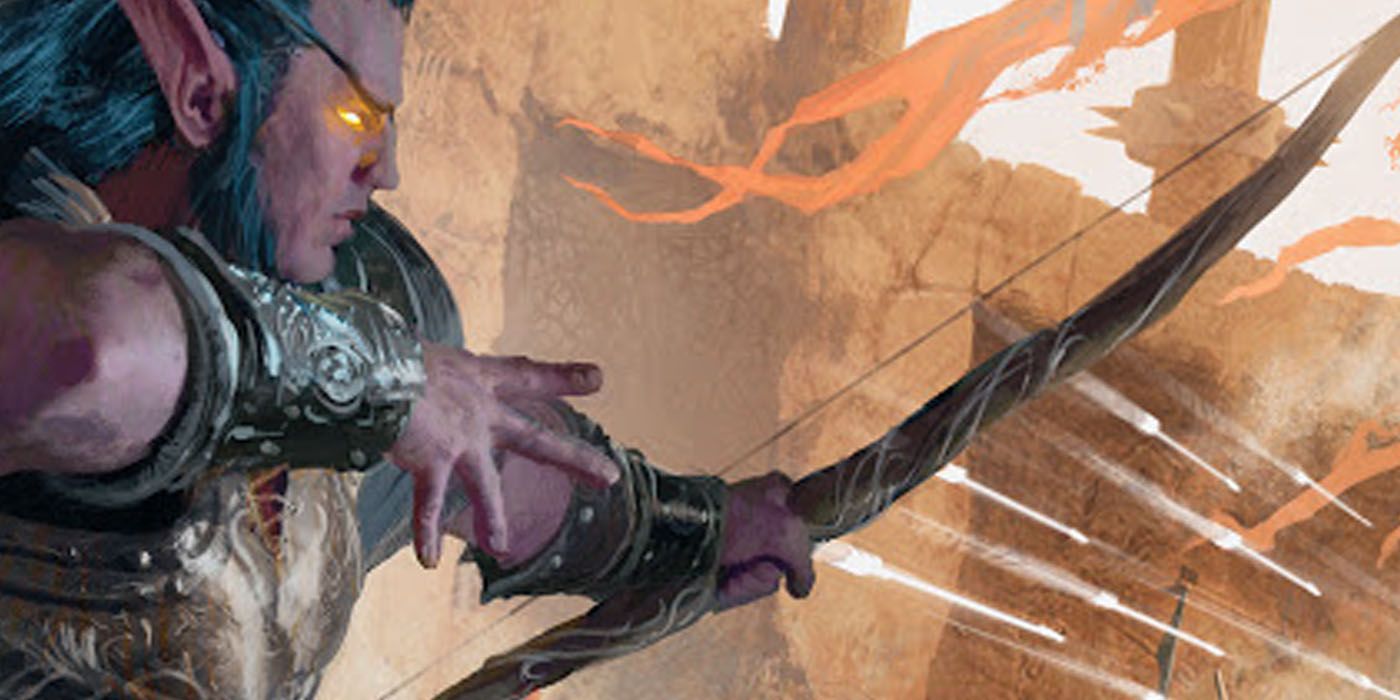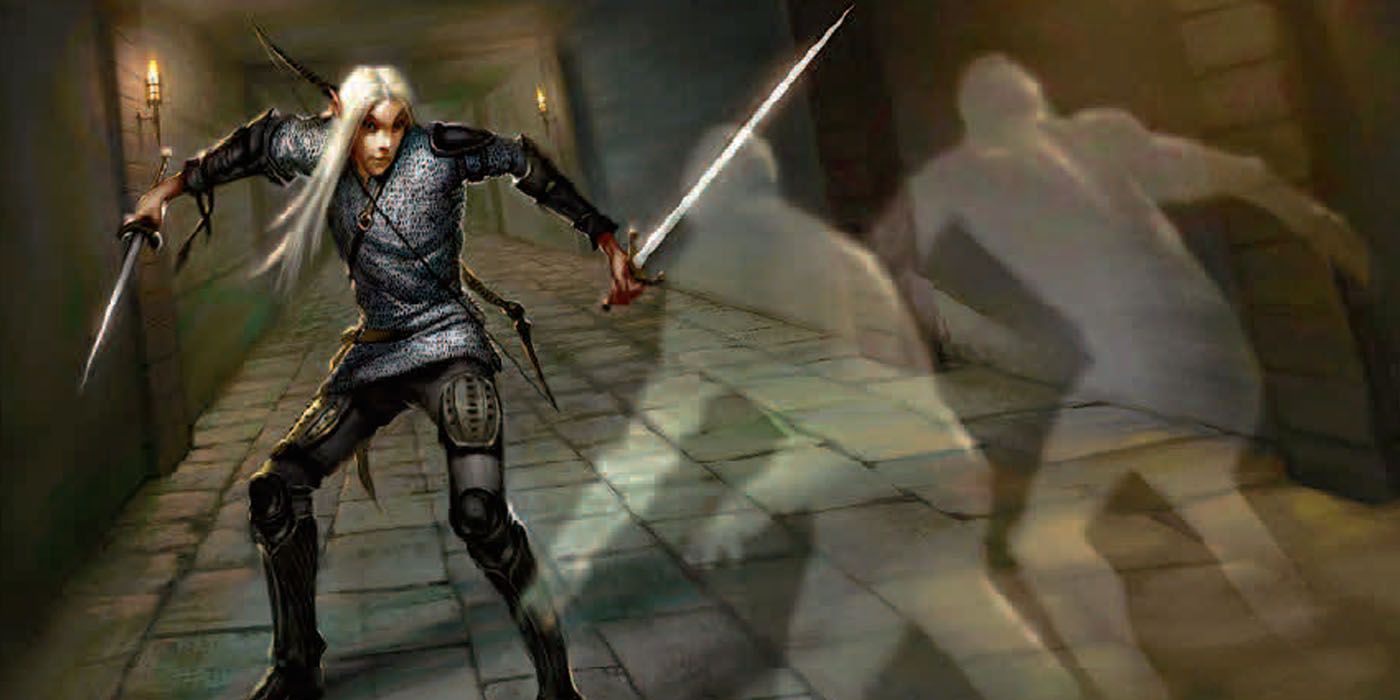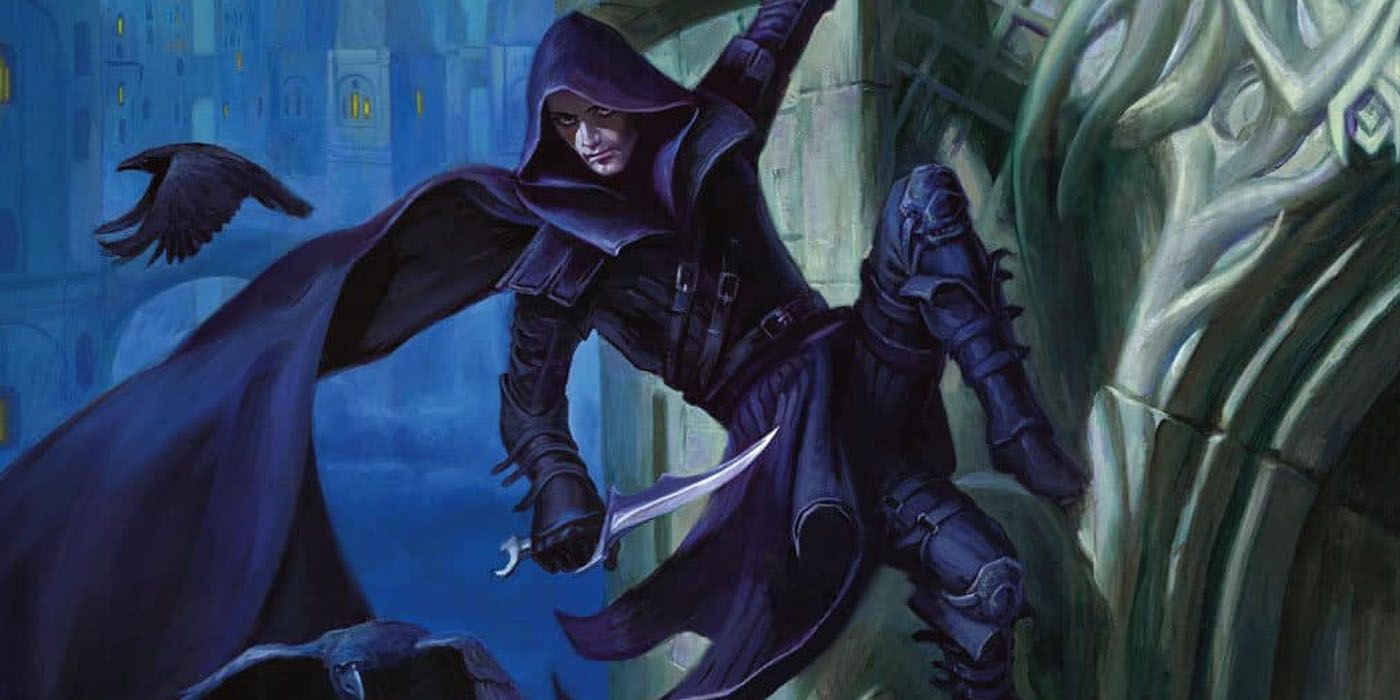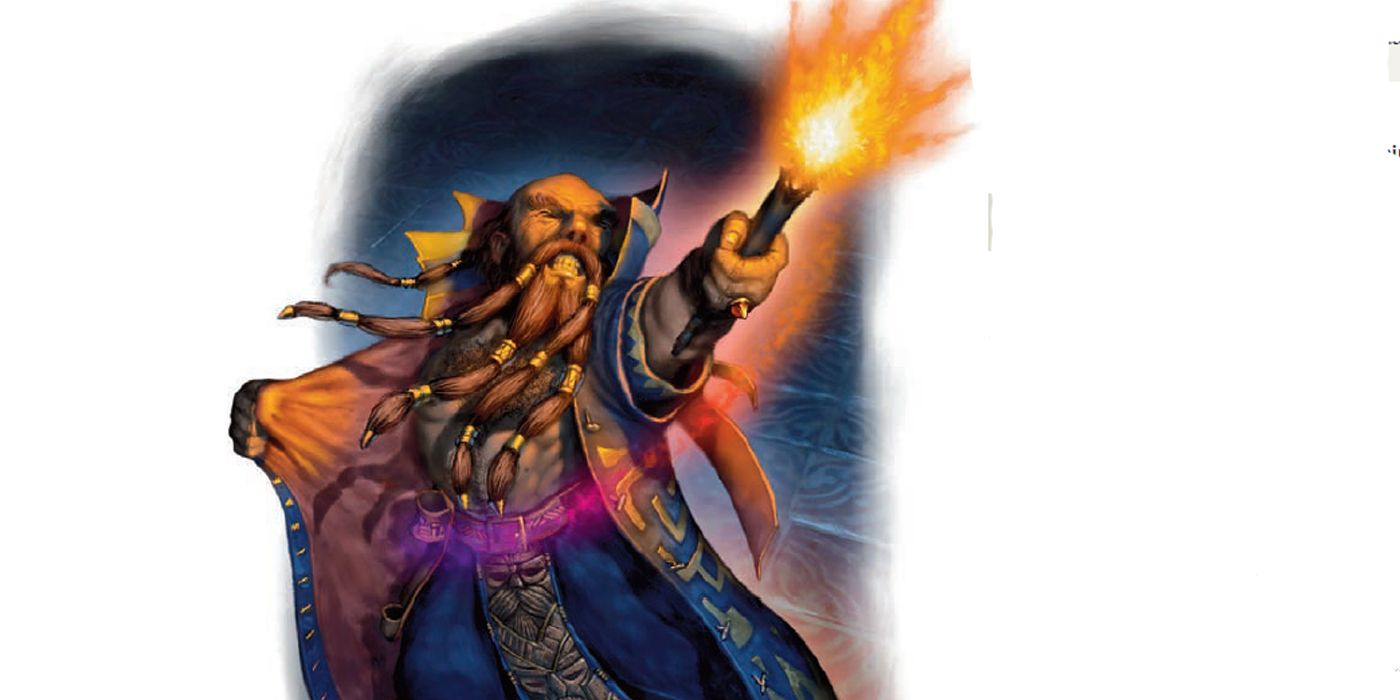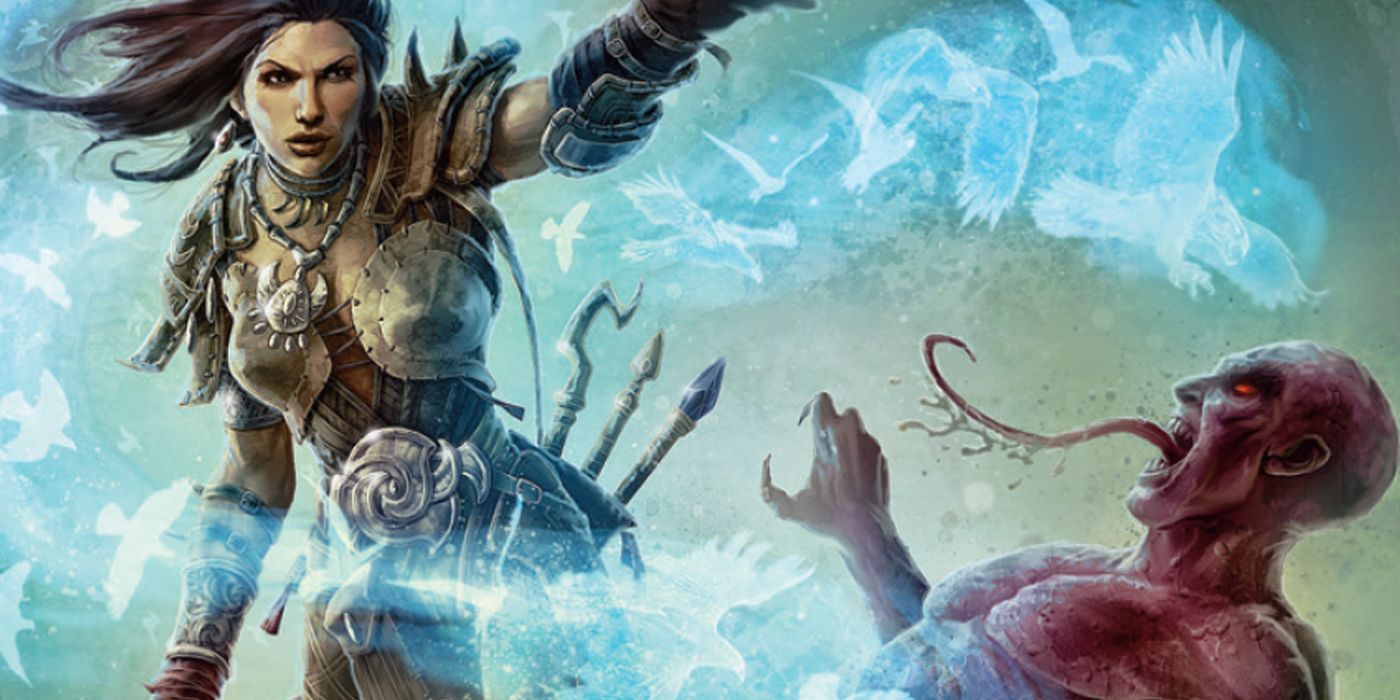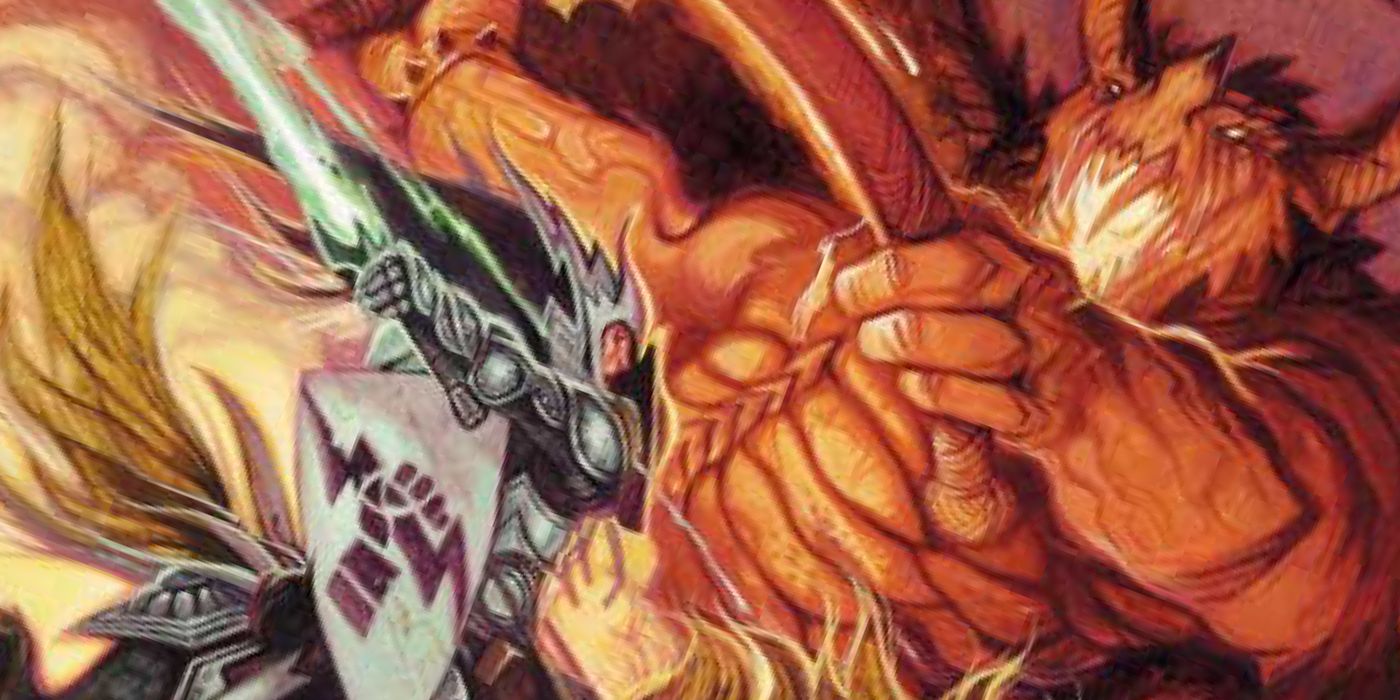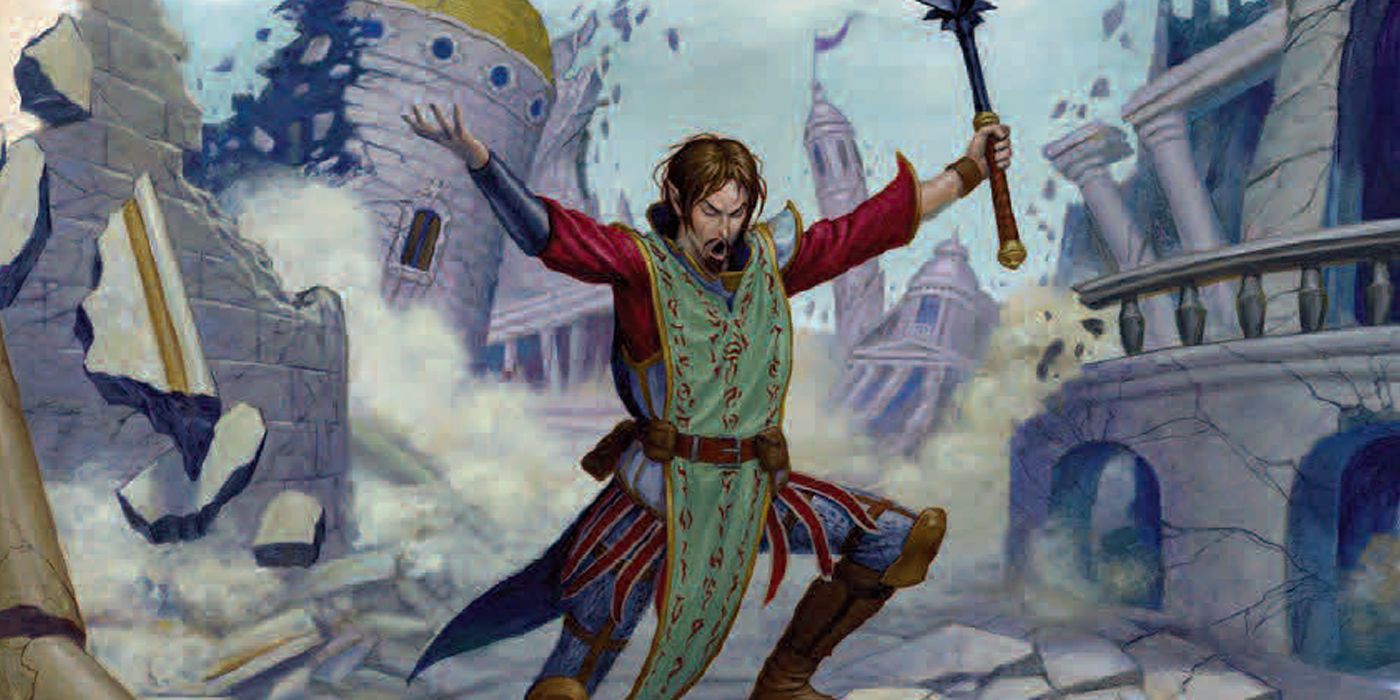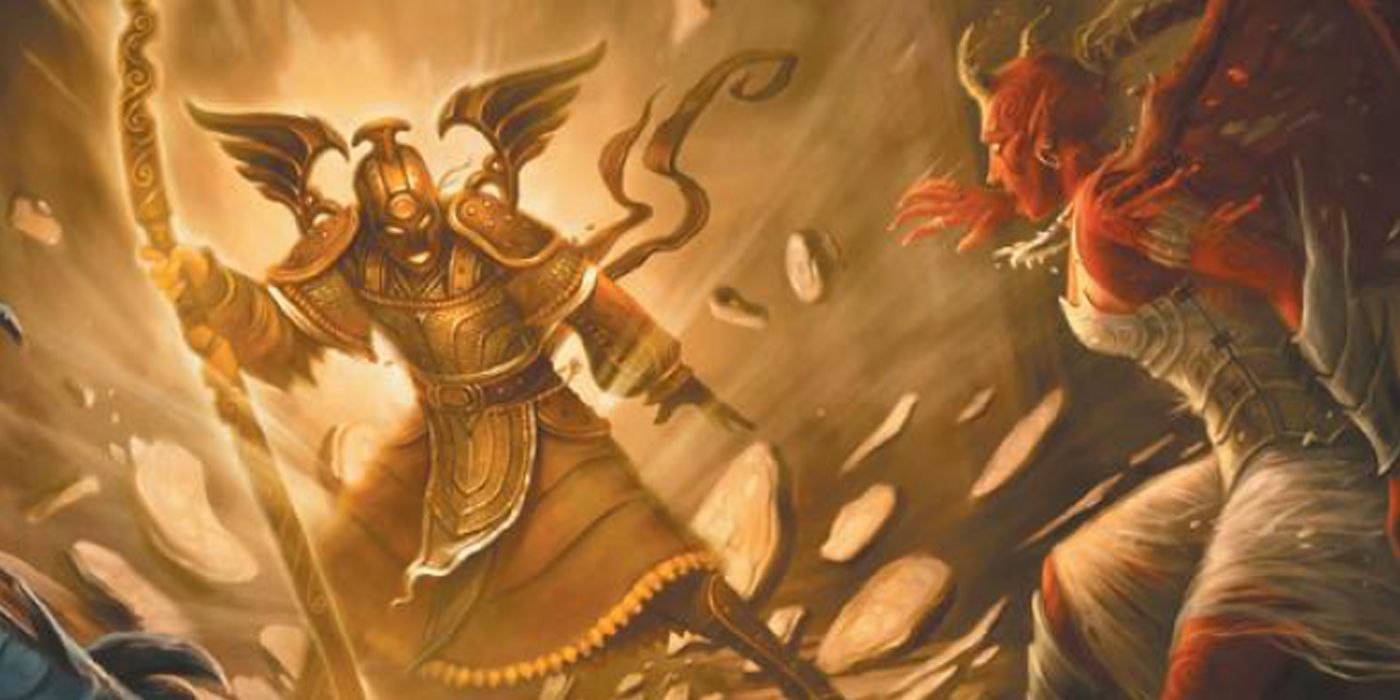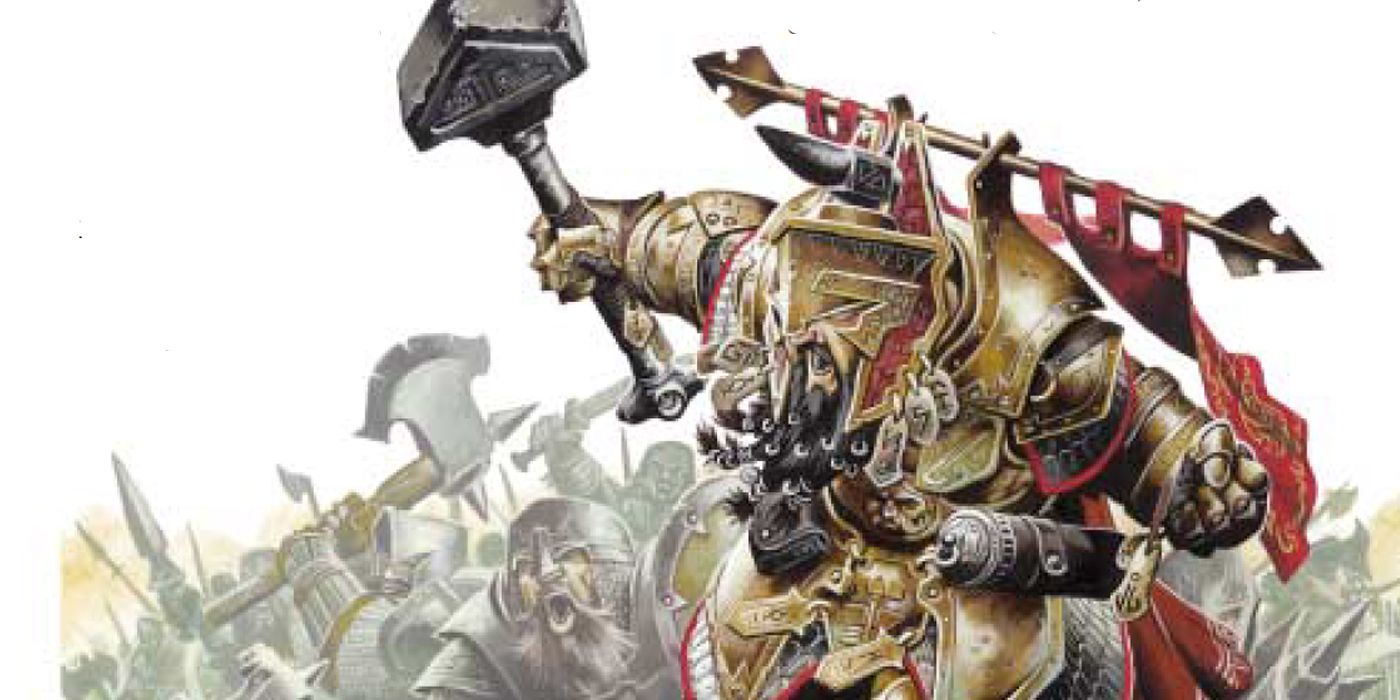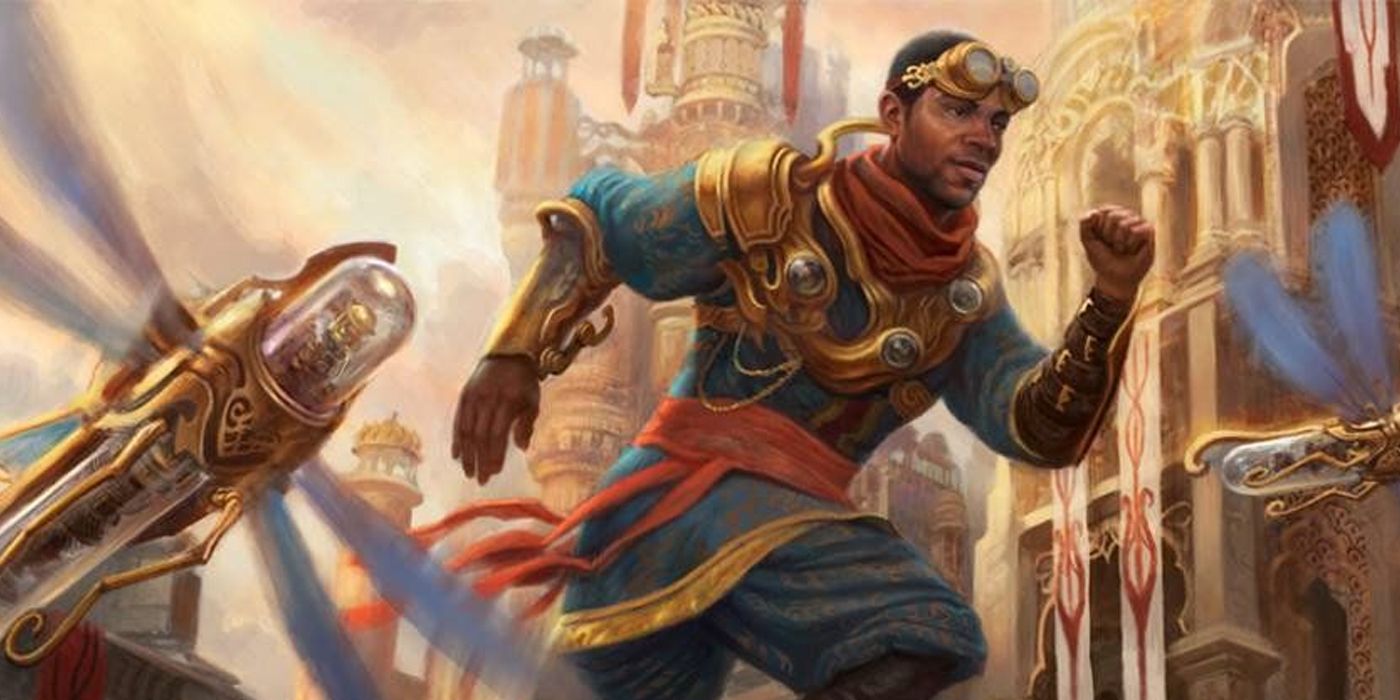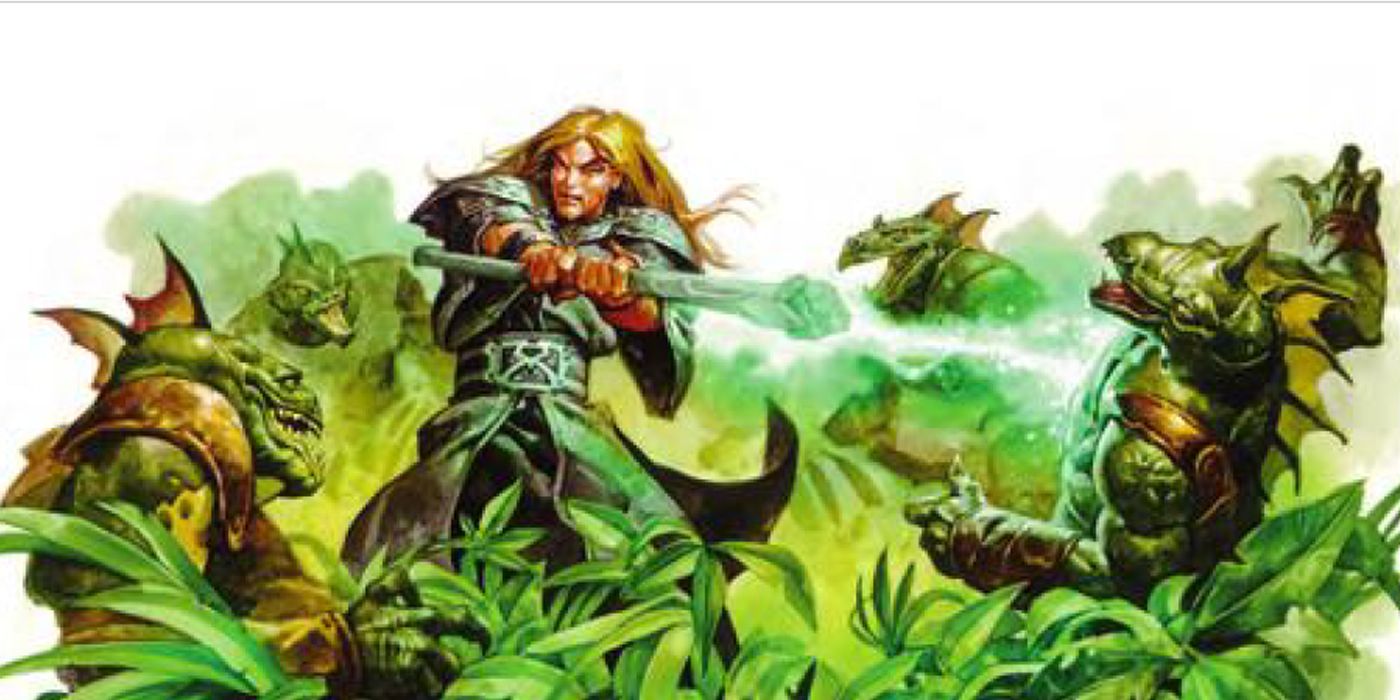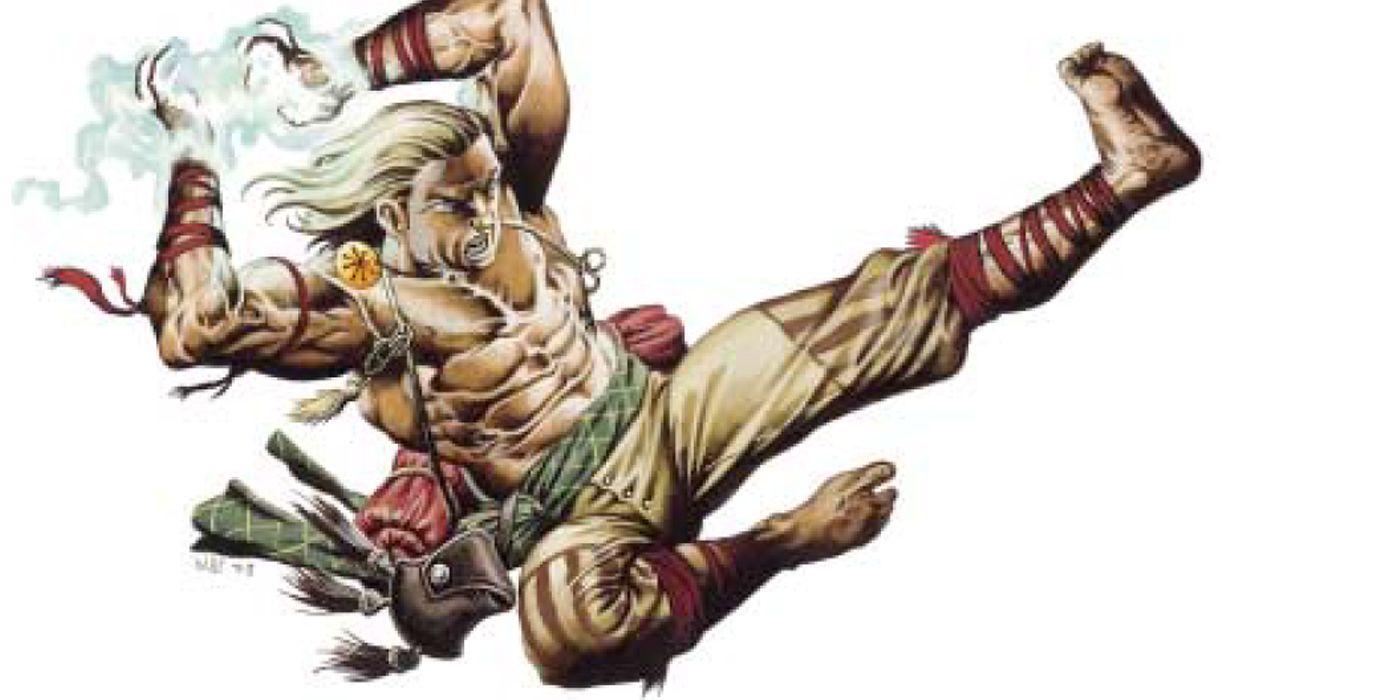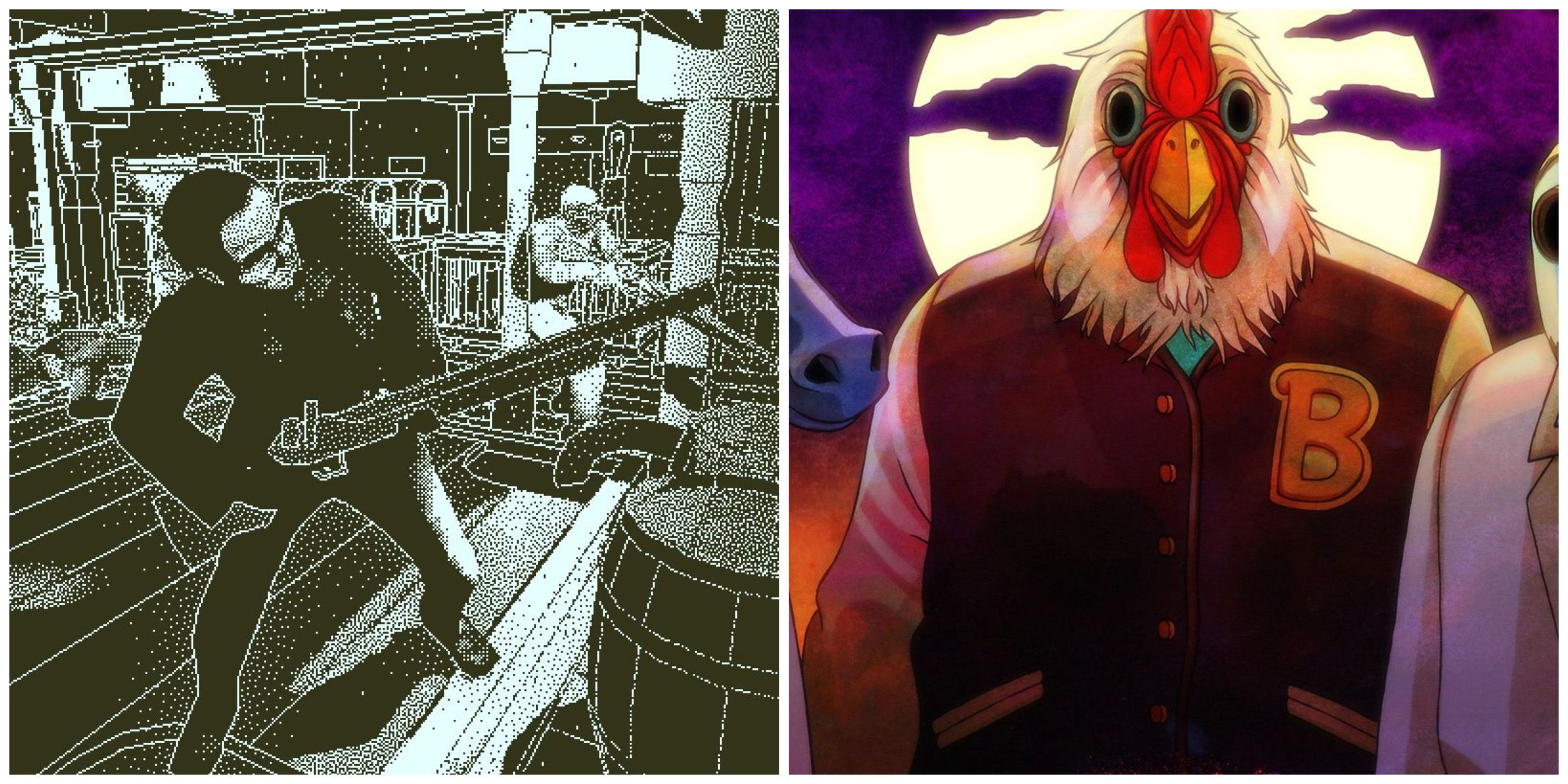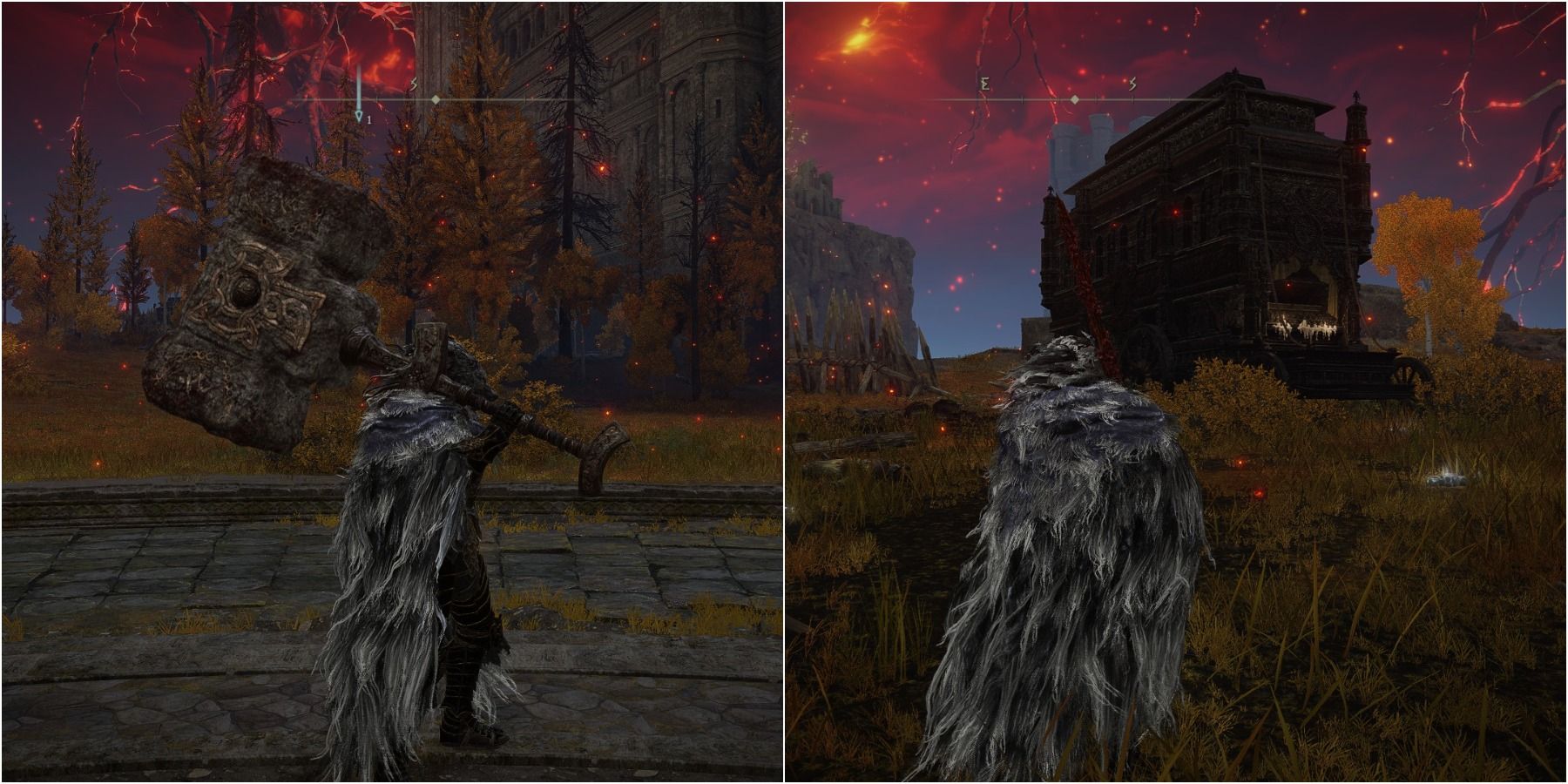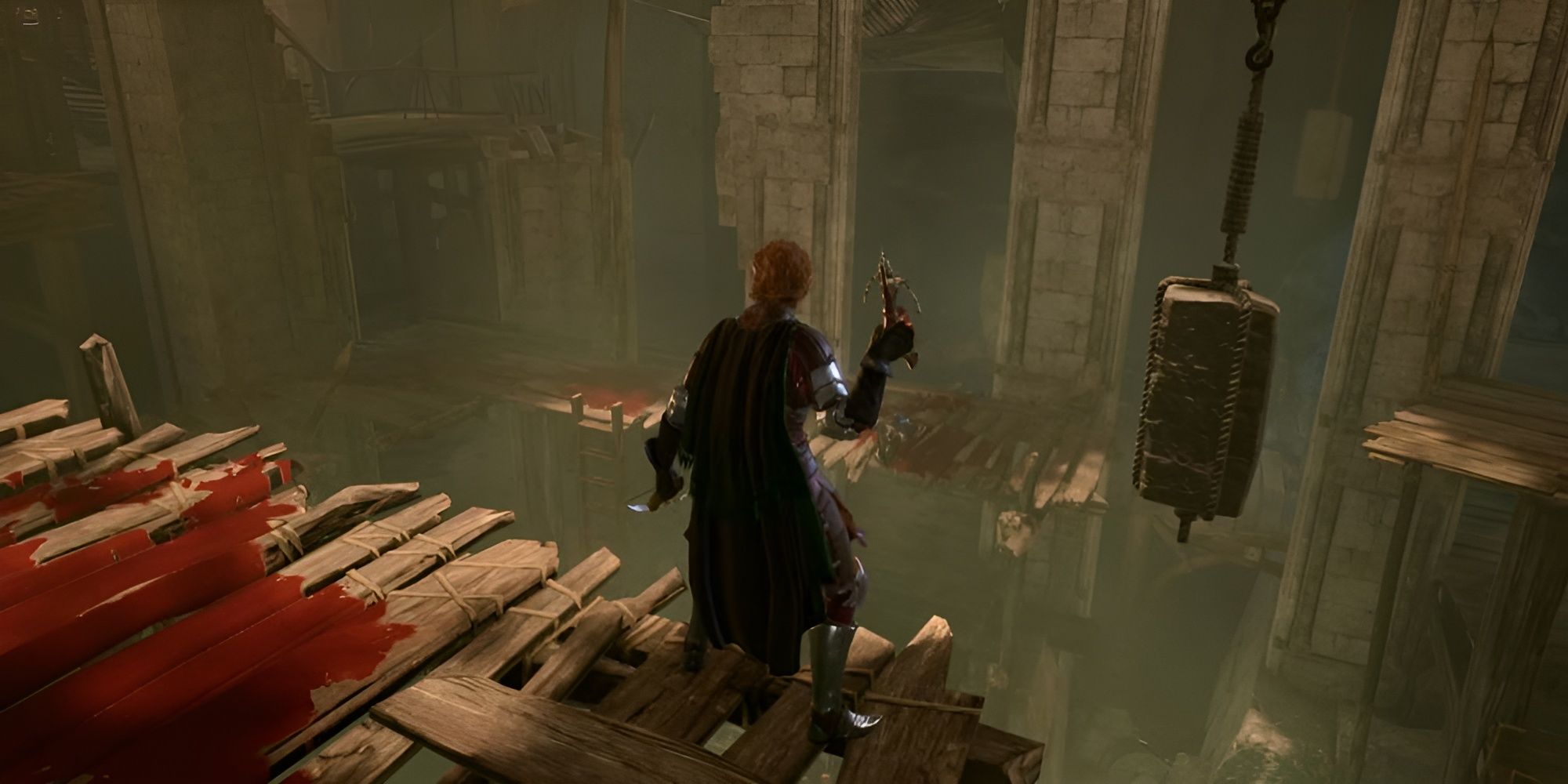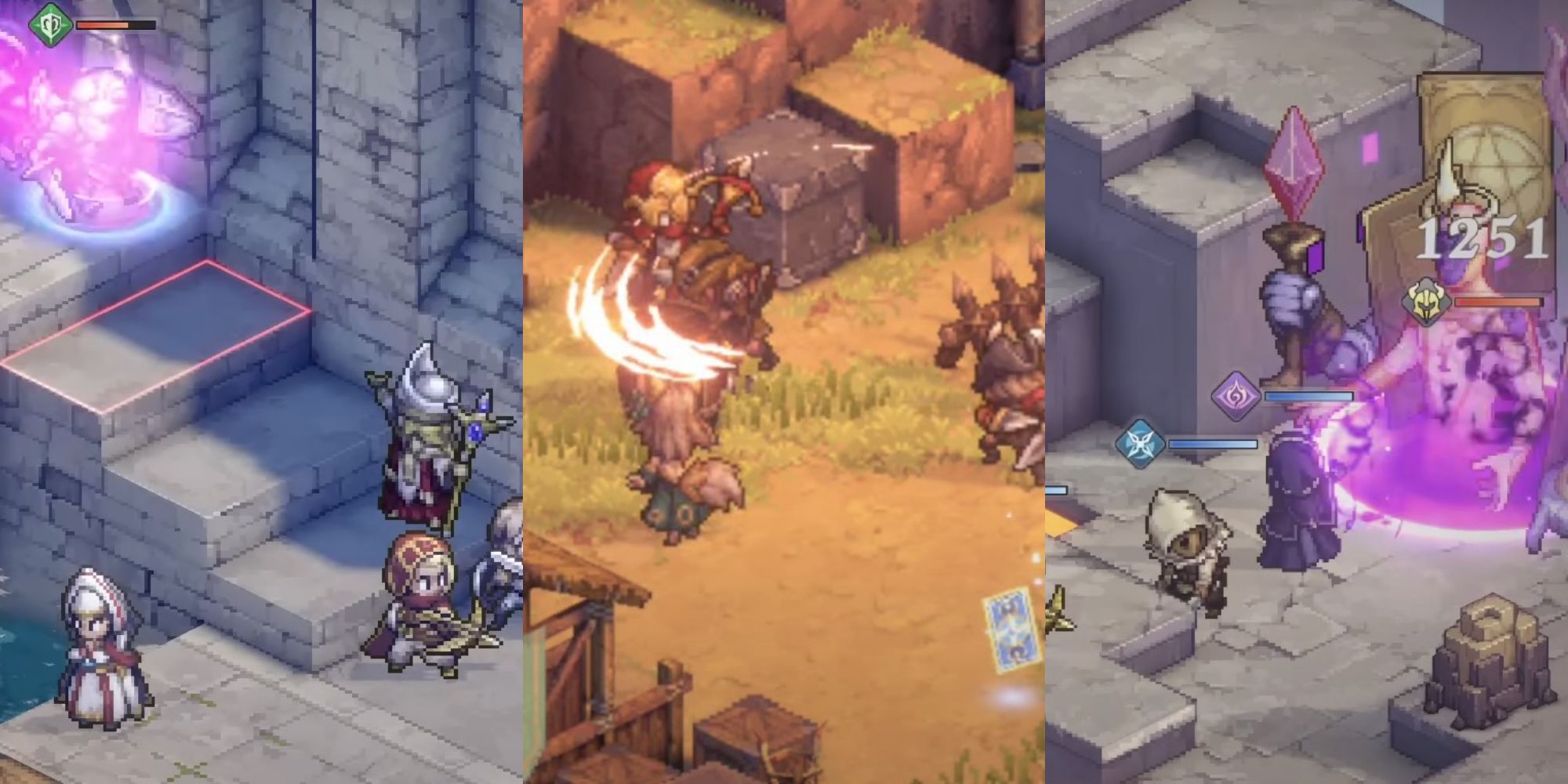Highlights
- Multiclassing in Dungeons and Dragons adds originality and character progression by integrating levels from different classes.
- The combination of Gloom Stalker Ranger, Assassin Rogue, and Battle Master Fighter allows for extreme DPS and versatility in combat.
- The combination of Vengeance Paladin, Assassin Rogue, Whispers Bard, Fighter, Hexblade Warlock, and Sorcerer creates a burst first-turn specialist build for quick enemy elimination.
Multiclassing has become a staple mechanic in Dungeons and Dragons, particularly when it comes to character progression. After all, Multiclassing in D&D means taking or “dipping” into the levels of another Class and integrating them into the build of a player character. As such, instead of having a character with levels exclusive to a Class, a Multiclass option adds much-needed originality to a character’s experience.

Dungeons And Dragons: 8 Great Campaigns For Small Groups (3 Players Or Less)
Dungeons and Dragons can be the most rewarding when playing it in small groups with these excellent campaigns.
Unfortunately, with around 14 canonical Classes in D&D 5e alone, and with almost no limit as to how many Classes a character can dip into, the idea of Multiclassing can be quite overwhelming for beginners. Thankfully, a little tinkering can help players arrive at “meta” versions of the best Multiclassing combinations in D&D.
Updated December 21, 2023 by Rhenn Taguiam: With Dungeons & Dragons set to release its updated Player’s Handbook in 2024, fans of the acclaimed TTRPG may be curious as to how the new changes in the core rulebook may alter the way they play the game. However, with the book still set for a May 2024 release, fans can still enjoy the current version of the game and all the features it offers – particularly Multiclassing, which can pave the way for extremely unique character builds.
Among recommended Multiclass options include an amalgamation of a long-ranged stealthy combatant, a character that relies on the sheer ferocity of securing the first attack in combat, and a build that dips into half of the game’s available Classes.
1 Gloom Stalker Ranger 11, Assassin Rogue 7, Battle Master Fighter 3
Multi-Attack Abuse For Extreme DPS
| Class | Features To Take Note |
|---|---|
| Ranger 11 | Favored Enemy (Level 1) Natural Explorer (Level 1) Spellcasting (Level 2) Fighting Style (Level 2) Dread Ambusher (Level 3) Umbral Sight (Level 3) Ability Score Improvement, Feat (Level 4, 8) Extra Attack (Level 5) Iron Mind (Level 7) Stalker’s Fury (Level 11) |
| Rogue 7 | Sneak Attack (Level 1) Cunning Action (Level 2) Assassinate (Level 3) Ability Score Improvement (Level 4) Uncanny Dodge (Level 5) Evasion (Level 7) |
| Fighter 3 | Fighting Style (Level 1) Second Wind (Level 1) Action Surge (Level 2) Combat Superiority (Level 3) |
The Ranger and the Rogue Multiclass remain an ever-present combination for Dungeons & Dragons players, especially with how well the Classes blend their ranged and melee specializations. Securing Gloom Stalker Ranger as a starting Class gives players much-needed utility to survive dungeons on top of always trying to get hits by squeezing as many Attacks in an Action as often as possible, securing potential damage output that can cripple enemy forces before they strike back.
The Ranger’s ferocity pairs greatly with the Assassin Rogue and their arsenal of stealth-specializing ambushes, giving players a headstart as a DPS should they secure surprise rounds via Sneak Attacks. Lastly, dipping into Battle Master Fighter can add much-needed versatility via Maneuvers.
- Sharpshooter (Feat): This feat ensures ranged attacks at melee don’t have Disadvantage, and the -5 to Attack Rolls in exchange for +10 Damage can almost always secure insta-kills with the right setups.
- Dread Ambusher (Gloom Stalker Ranger, Level 3): The WIS Modifier bonus to Initiative pairs decently with this feature’s first-turn attack advantage, where players can make another Attack during that Action that adds 1d8 Damage should it hit.
- Assassinate (Assassin Rogue, Level 3): The auto-crit on surprised creatures and Advantage against enemies who haven’t taken their turn in the round yet blends well with the Ranger’s invisibility capabilities.
- Stalker’s Flurry (Gloom Stalker Ranger, Level 11): Once per turn, missing a weapon Attack gives players the chance to make another Attack as part of the same Action, countering Dread Ambusher’s potential to fail.
2 Vengeance Paladin 6, Assassin Rogue 4, Whispers Bard 4, Fighter 2, Hexblade Warlock 1, Any Sorcerer
Burst First-Turn Specialist To Eliminate Enemies Quickly
| Class | Features To Take Note |
|---|---|
| Paladin 6 | Divine Sense (Level 1) Lay on Hands (Level 1) Fighting Style (Level 2) Spellcasting (Level 2) Divine Smite (Level 2) Vengeance Spells (Level 3) Channel Divinity (Level 3) Ability Score Improvement/Feat (Level 4) Extra Oath (Level 5) Aura of Protection (Level 6) |
| Rogue 4 | Sneak Attack (Level 1) Cunning Action (Level 2) Assassinate (Level 3) Alert Feat (Level 4) |
| Bard 4 | Spellcasting (Level 1) Bardic Inspiration (Level 1) Song of Rest (Level 2) Expertise (Level 3) Psychic Blades (Level 3) Ability Score Improvement/Feat (Level 4) |
| Fighter 2 | Fighting Style (Level 1) Second Wind (Level 1) Action Surge (Level 2) |
| Warlock 1 | Expanded Spell List (Level 1) Hexblade’s Curse (Level 1) Hex Warrior (Level 1) |
| Sorcerer 3 | Sorcerous Origins (Level 1) Font Of Magic/Sorcery Points (Level 2) Metamagic (Level 3) |
Sometimes, the best way to eliminate enemies is to do so with precision and ferocity, which is something this particular Dungeons & Dragons build emphasizes with the guaranteed criticals from the Assassin Rogue on Sneak Attacks against surprised opponents. Building upon this perk is the capability to pull off a burst turn per round, especially when stacking damage buffs from the Hexblade Warlock and the Whispers Bard on top of the Vengeance Paladin’s extra Smites.
Even with depleting Spell Slots across rounds, dipping into Fighter adds versatility with Action Surge, whereas Any Sorcerer dip could provide much-needed Metamagic to enhance Spells. It’s recommended to do this build with a Half-Elf to further optimize their base stats, especially when it comes to their attack modifiers.
- Elven Accuracy (Feat): On top of the potential +1 CHA to boost the potency of Modifiers, the ability to reroll one dice from an Advantaged CHA-based Attack Roll can spell the difference between a successful hit or an utter failure.
- Alert (Feat): +5 to Initiative boosts the player’s chances of going first in combat, proccing the rest of the build’s effects.
- Assassinate (Assassin Rogue, Level 3): Auto-crits on surprise creatures immediately boost DPS, and having Advantage on Attacks against opponents who haven’t taken their turn yet secures decent damage regardless of situations.
- Psychic Blades (Whispers Bard, Level 3): Expending Bardic Inspiration to deal +2d6 Psychic Damage to a target once per round is a partial-Smite, especially when players run out of Spell Slots for the Paladin ability.
- Hex Warrior (Hexblade Warlock, Level 1): Being able to transform a preferred weapon into a Hexblade Weapon and use CHA Mod for combat can be a decent substitute for any traditional Rogue weapon.
- Hexblade’s Curse (Hexblade Warlock, Level 1): The 1-minute curse that adds Proficiency Bonus to Damage Rolls against them, an auto-crit as early as 19 on Attack Rolls against them, and Warlock Level + CHA Mod healing upon their death can be much-needed damage buffs.
3 Gloom Stalker Ranger 5, Hexblade Warlock 5, Battle Master Fighter 4, Assassin Rogue 4, Life Cleric 1, Divine Soul Sorcerer 1
Burst First-Turn Attacker Before Retreating Into Support
| Class | Features To Take Note |
|---|---|
| Ranger 5 | Favored Enemy (Level 1) Natural Explorer (Level 1) Spellcasting (Level 2) Fighting Style (Level 2) Dread Ambusher (Level 3) Umbral Sight (Level 3) Crossbow Expert Feat (Level 4) Extra Attack (Level 5) |
| Warlock 5 | Otherworldly Patron (Level 1) Expanded Spell List (Level 1) Hexblade’s Curse (Level 1) Hex Warrior (Level 1) Eldritch Invocation (Level 2) Pact Boon (Level 3) Ability Score Improvement/Feat (Level 4) |
| Fighter 4 | Fighting Style (Level 1) Second Wind (Level 1) Action Surge (Level 2) Combat Superiority (Level 3) Sharpshooter Feat (Level 4) |
| Rogue 4 | Sneak Attack (Level 1) Cunning Action (Level 2) Assassinate (Level 3) Ability Score Improvement (Level 4) |
| Cleric 1 | Spellcasting (Level 1) Divine Domain (Level 1) Disciple of Life (Level 1) |
| Sorcerer 1 | Spellcasting (Level 1) Divine Magic (Level 1) Favored By The Gods (Level 1) |
Despite the immediate risk of prioritizing multiple Ability Scores for intense Multiclass combinations, there are ways of including as many Dungeons & Dragons Classes as possible into a build that may still be able to perform in combat. At its core, this particular build maximizes the capabilities of the Gloom Stalker Ranger as a round-one burst damage specialist before retreating into a standard attacker/sub-support role.
The latter strategy is made possible with Battle Master Fighter Maneuvers, as well as the Life Cleric for enhanced casting. The build becomes more “specialized” with the arrival of the Assassin Rogue, the Hexblade Warlock, and Divine Soul Sorcerer dips. Thanks to their levels, Sneak Attacks elevate base damage numbers, while Pact Magic expands the character’s arsenal of spells.
- Crossbow Expert (Feat): Removing Loading quality and Disadvantage at close-ranged hits on top of Bonus Attacks for hand crossbow attacks can increase the character’s combat options.
- Sharpshooter (Feat): Being able to attack with a ranged weapon at melee without Disadvantage on top of the -5 Attack Roll penalty for +10 Damage provides a significant increase in base DPS.
- Dread Ambusher (Gloom Stalker Ranger, Level 3): The WIS Mod bonus to Initiative can boost the character’s chances of attacking first, which could then facilitate an additional Attack with +1d8 Damage for that specific Attack Action.
- Assassinate (Assassin Rogue, Level 3): Advantage on Attacks against opponents who have yet to take a turn in combat on top of auto-crits on a surprised foe makes for a decent follow-through on Dread Ambusher’s Initiative boost.
- Hexblade’s Curse (Hexblade Warlock, Level 1): Adding Proficiency Bonus to damage, triggering a critical hit as early as 19, and healing for Warlock Level + CHA Mod can incentivize more focused attacks on a particular target.
- Improved Pact Weapon (Warlock, Eldritch Invocation): The +1 Attack Roll and Damage bonus on top of extending it to long-ranged armaments (Shortbow, Longbow, Light Crossbow, Heavy Crossbow) removes the need for the character to stay up close.
- Eldritch Smite (Warlock, Eldritch Invocation): The +1d8 Force Damage and +1d8 per Warlock Spell Slot expended with instant Prone against Huge and smaller enemies can add to maximized burst damage.
- Disciple of Life (Life Cleric, Level 1): Boosting healing Spells with additional 2 + Spell’s Level can transform the typical 1 HP healing of a Goodberry into 4 HP per berry, boosting its original 10 HP healing cap into 40 HP for a mere 1st-Level Spell Slot.
4 Storm Herald Barbarian, Up To Echo Knight Fighter 3
Extend Rage Into Any Direction, Any Range
| Class | Features To Take Note |
|---|---|
| Barbarian 17 | Rage (Level 1) Unarmored Defense (Level 1) Reckless Attack (Level 2) Danger Sense (Level 2) Primal Path (Level 3) Storm Aura (Level 3) Ability Score Improvement/Feat (Level 4, 8, 12, 16) Extra Attack (Level 5) Storm Soul (Level 6) Feral Instinct (Level 7) Brutal Critical (Level 9, 13, 17) Relentless Rage (Level 11) Raging Storm (Level 14) |
| Fighter 3 | Fighting Style (Level 1) Second Wind (Level 1) Action Surge (Level 2) Manifest Echo (Level 3) Unleash Incarnation (Level 3) |
Imagine a Barbarian unleashing unchecked fury from any direction they wish. This is the kind of versatility the Echo Knight provides the Barbarian, especially since their Unleash Incarnation allows the Echo Knight to change the point of origin of their combos. With the Barbarian giving default access to an attack-enhancing Rage mechanic in D&D gameplay, the Echo Knight’s nigh-teleporting abilities can help players make more targeted Raging attacks.
However, even if the Storm Herald Barbarian is durable enough to become a potent tank, dipping in any level will give up their Level 20 Capstone that gives them +4 Strength and Constitution. Players need to consider their party synergies before proceeding to dip in Echo Knight, as this dip may drastically lessen the Barbarian’s damage output and Hit Point total in exchange for combat versatility.
- Rage (Barbarian, Level 1): The core aspect of a Barbarian’s kit, activating this gives Advantage on Strength Checks and Saves on top of damage bonuses per Barbarian Level, as well as Resistances to Bludgeoning, Piercing, and Slashing Damage.
- Reckless Attack (Barbarian, Level 2): Barbarians can get Advantage on their Attacks for their turn in exchange for enemies getting Advantage on Attacks against the Barbarian until the player starts their turn.
- Storm Aura, Storm Soul, Raging Storm (Storm Herald Barbarian; Levels 3, 6, 14): Barbarians can conjure a Storm Aura based on an environment that has different effects, giving them a quasi-control role.
- Feral Instinct (Barbarian, Level 7): Barbarians get Advantage on their Initiative Rolls.
- Relentless Rage (Barbarian, Level 11): Barbarians who drop to 0 HP on Rage can do a DC 10 CON Save to drop to 1 HP instead.
- Unleash Incarnation (Echo Knight Fighter, Level 3): When players take the Attack Action, they can use the Echo to make an additional melee Attack. They can do this several times based on their CON Modifier before taking a long rest.
5 Any Ranger, Up To Assassin Rogue 10
Sneak And Stealth At Any Range Maximize DPS
| Class | Features To Take Note |
|---|---|
| Ranger 10 | Favored Enemy (Level 1) Natural Explorer (Level 1) Spellcasting (Level 2) Fighting Style (Level 2) Primeval Awareness (Level 3) Ranger Conclave (Level 3) Ability Score Improvement/Feat (Level 4, 8) Extra Attack (Level 5) Ranger Conclave Feature (Level 7) Hide In Plain Sight (Level 10) |
| Rogue 10 | Sneak Attack (Level 1) Cunning Action (Level 2) Assassinate (Level 3) Uncanny Dodge (Level 5) Evasion (Level 7) Reliable Talent (Level 11) |
Fitting the archetypal min-max maneuver when it comes to D&D 5e mechanics, the Ranger-Rogue combination easily taps into the Classes’ innate versatility on top of a nifty Dexterity 13 requirement. Key to the build is being able to select any Ranger archetype, giving players enough freedom to approach combat in a variety of styles depending on what the party needs.
However, where this Multiclass build shines is the Assassin Rogue and its potential to transform the Ranger into a damage powerhouse. Thanks to Assassinate, the Ranger can capitalize on their ability to scout ahead safely and dish out an immediate Critical Hit to an unsuspecting enemy – which can be useful in missions where players know they’re facing a boss.
- Fighting Style (Ranger, Level 2): The extra Fighting Style can help players diversify their damage options, especially in tandem with the Rogue’s Sneak Attack.
- Sneak Attack (Rogue, Level 1): Players can deal extra 1d6 damage to an opponent once per turn provided they have Advantage, with the damage dice scaling throughout Rogue levels.
- Expertise (Rogue, Level 1): Players can double their Proficiency Bonuses for Ability Checks involving two Skills or one Skill and Thieves’ Tools.
- Cunning Action (Rogue, Level 2): The Rogue can use a Bonus Action to either Dash, Disengage, or Hide.
- Assassinate (Assassin Rogue, Level 3): The Assassin has Advantage to Attack Rolls to creatures who haven’t taken a turn in combat yet. Moreover, hitting a Surprised creature counts as a Critical.
- Steady Aim (Rogue, Level 3): The Rogue can give themselves Advantage on their next Attack Roll if they haven’t moved for the turn. Doing this reduces them to 0 Speed until their next turn.
- Uncanny Dodge (Rogue, Level 5): The Rogue can use their Reaction to halve the damage of an attack they can see.
- Evasion (Rogue, Level 7): The Rogue can take no damage if they succeed a DEX Save caused by an Attack.
6 Circle Of Dreams Druid, Up To Life Cleric 2
Improved Healing Maximizes Support Efficiency
| Class | Features To Take Note |
|---|---|
| Druid 18 | Spellcasting (Level 1) Wild Shape (Level 2) Balm of the Summer Court (Level 2) Wild Shape Improvement (Level 4, 8, 12, 16, 18) Ability Score Improvement (Level 4, 8, 12, 16, 18) Hidden Paths (Level 10) Walker in Dreams (Level 14) Beast Spells (Level 18) |
| Cleric 2 | Spellcasting (Level 1) Divine Domain (Level 1) Disciple of Life (Level 1) Channel Divinity (Level 2) |
Sharing a reliance on the Wisdom Attribute makes both the Druid and the Cleric an effective Multiclass combo in D&D 5e playthroughs. At its core, the versatility of a Druid’s utility and crowd control options can add more flexibility to the buff-heavy Cleric and vice versa, with a Circle of Dreams Druid in tandem with a Life Cleric making for a powerhouse healer.
At first glance, the healing provided by the Dreams Druid should be enough to cover most of the party’s recovery needs. Not to mention, Wild Shape on top of Dreams utilities can make the Druid a tank in their own right. However, dipping into the Life Domain in particular gives players access to much-needed Cleric Cantrips and lower-level Spells that can bolster the player’s arsenal of buffs.
- Balm of the Summer Court (Circle of Dreams Druid, Level 2): The Druid gets d6s worth of HP equivalent to their level, and can spend a Bonus Action to heal an ally for up to d6s worth half the Druid’s level.
- Hidden Paths (Circle of Dreams Druid, Level 10): A free Bonus Action teleport for the Druid (up to 60ft) or an ally (30ft) that can be used several times equal to the Druid’s WIS Mod.
- Spellcasting (Cleric, Level 1): Just access to 3 Cleric Cantrips and 2 1st-Level Cleric Spells can add much-needed buffs to bolster the player’s arsenal. Special access to Bless and Cure Wounds specifically under the Life Domain can make the Dreams Druid more combat-efficient.
- Bonus Proficiency (Life Domain Cleric, Level 1): Proficiency with Heavy Armor can bolster the Druid’s overall base defense, making them a more effective tank.
- Channel Divinity: Preserve Life (Life Domain Cleric, Level 2): The Cleric gets a pool worth 5*Cleric Level, wherein players can distribute these HP to heal others but not above half their Max HP. Up to 10 HP of healing is still more than enough to provide emergency healing in extreme emergencies.
7 Echo Knight Fighter, Up To Battle Smith Artificer 3
| Class | Features To Take Note |
|---|---|
| Echo Knight 17 | Fighting Style (Level 1) Second Wind (Level 1) Action Surge (Level 2) Manifest Echo (Level 3) Unleash Incarnation (Level 3) Ability Score Improvement/Feat (Level 4, 6, 8, 12, 14, 16) Echo Avatar (Level 7) Shadow Martyr (Level 10) Reclaim Potential (Level 15) |
| Artificer 3 | Infuse Item (Level 2) Battle Ready (Level 3) Steel Defender (Level 3) |
The Echo Knight is regarded as one of the more efficient Fighter Subclasses for its technical versatility, with the Echo duplicate allowing players to dish out multiple attacks from different directions. Combining this with the Battle Smith Artificer gives Spellcasting versatility to the ordinarily melee-dependent Fighter build.
While the Artificer dip seems to be an unconventional Multiclass move for an Echo Knight in D&D 5e gameplay, the Battle Smith Subclass choice can give an aesthetic “mystical battlemage” flair to the usually-fragile Artificer. The Echo Knight having access to extra Spells also gives them more combat options, making them a more versatile DPS.
- Unleash Incarnation (Echo Knight Fighter, Level 3): The Echo Knight can make another melee Attack from their Echo’s position when they take the Attack Action. They can use this several times based on their CON Modifier, giving them access to an additional Attack on top of their Extra Attack.
- Martial Versatility (Fighter, Every 4 Levels): Unlike other Classes, Fighters get access to more Martial Versatility (ASIs), allowing them to secure more Feats to form their ideal playstyle.
- Reclaim Potential (Echo Knight Fighter, Level 15): A destroyed Echo will give players Temporary Hit Points equal to 2d6+CON Modifier provided they don’t have existing Temp HP. They can use this a number of times based on their CON Modifier.
- Action Surge (Fighter, Level 2, Level 17): Unlike other Classes, Fighters get access to Action Surge, an additional Action players can use on top of their Extra Attack. At Level 17, players get access to another Action Surge before having to take a Rest.
8 Shadow Monk, Up To Assassin Rogue 3, Up To Any Ranger 2
Extend Usefulness With Sneak, Range Options
| Class | Features To Take Note |
|---|---|
| Monk 15 | Unarmored Defense (Level 1) Martial Arts (Level 1) Ki (Level 2) Unarmored Movement (Level 2) Shadow Arts (Level 3) Deflect Missiles (Level 3) Ability Score Improvement/Feat (Level 4, 8, 12, 16) Extra Attack (Level 5) Stunning Strike (Level 5) Shadow Step (Level 6) Evasion (Level 7) Cloak of Shadows (Level 11) Diamond Soul (Level 14) |
| Rogue 3 | Sneak Attack (Level 1) Cunning Action (Level 2) Assassinate (Level 3) Reliable Talent (Level 11) |
| Ranger 2 | Favored Enemy (Level 1) Natural Explorer (Level 1) Spellcasting (Level 2) Fighting Style (Level 2) |
Players who want to master the D&D 5e meta know that the Monk is likely the middle ground between the stealthier Rogue and the more versatile Ranger, with their base Attribute Requirements reflecting the comparison further. A Shadow Monk acts as a fantastical equivalent of the mystical ninja, with much of their Subclass Features cloaking them in darkness to facilitate more mobile attacks.
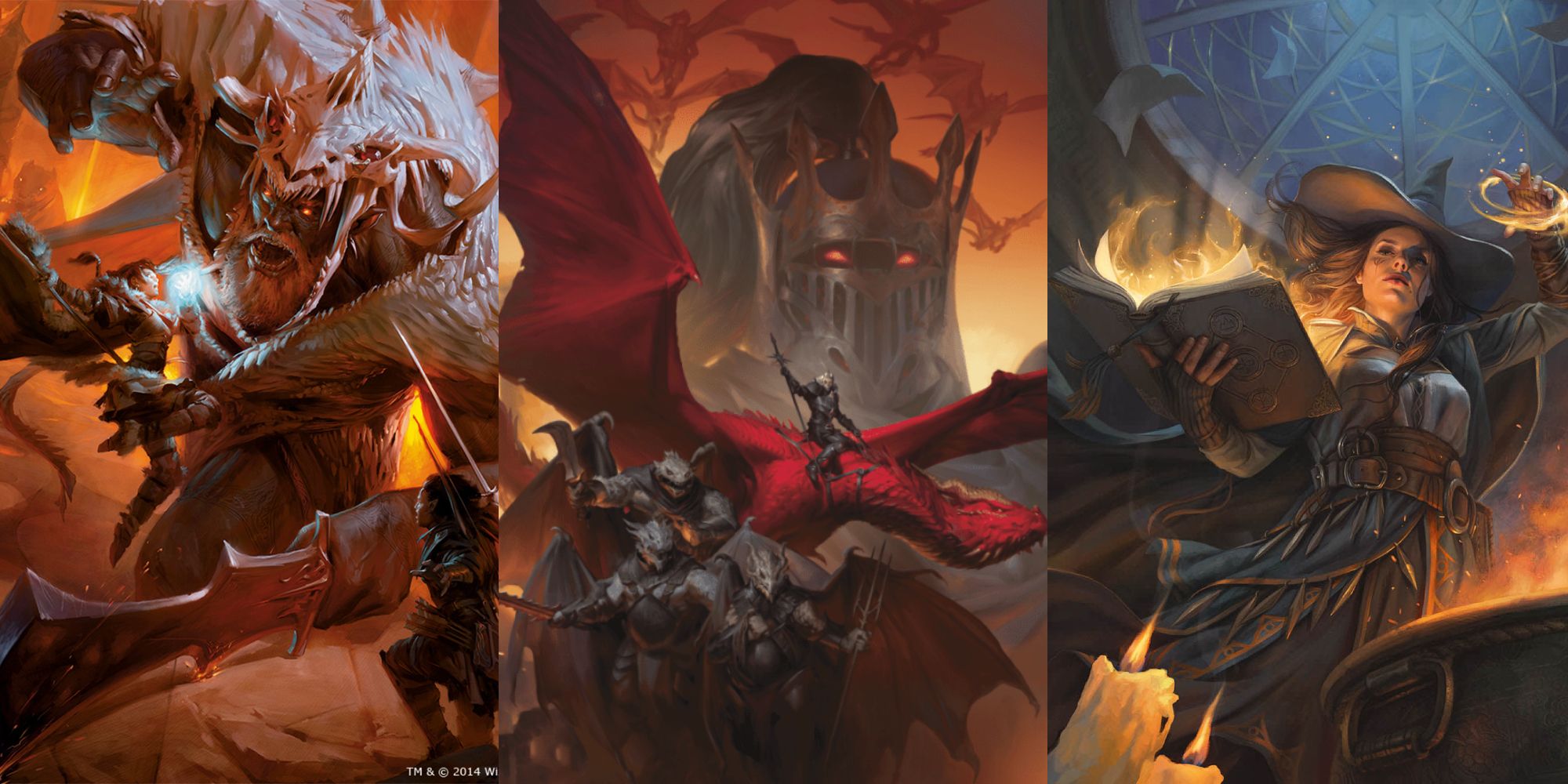
Dungeons and Dragons: 8 Best Feats For Fighters To Take
These feats are guaranteed to bring the edge to any Fighter character in Dungeons & Dragons.
However, players can capitalize on the Shadow Monk’s potential further by dipping into the Assassin Rogue to get access to more debilitating Sneak Attacks alongside the Ranger to maximize access to Fighting Styles. Considering how the Shadow Monk gets free access to Spells that hide them in almost plain sight, going Rogue for Sneak Attacks is a must-use.
- Shadow Arts (Shadow Monk, Level 3): The Monk can use 2 Ki Points to cast Darkness, Darkvision, Pass Without Trace, or Silence on top of getting Minor Illusion as Cantrip.
- Shadow Step (Shadow Monk, Level 6): Monks can use their Bonus Action to teleport from a space of dim light or darkness that is up to 60 feet away.
- Cloak of Shadows (Shadow Monk, Level 11): Monks can use their Action to become Invisible if they are in dim light or darkness. This stops if they enter an area with bright light, cast a spell, or make an attack.
- Sneak Attack (Rogue, Level 1): The Rogue gets an extra damage die (starts at 1d6) when they hit an opponent they have Advantage towards, with conditions varying depending on how the enemy is positioned.
- Fighting Style (Ranger, Level 2): As a Martial Class, the Ranger offers players yet another opportunity to get a Fighting Style. Depending on the player’s weapons of choice, Fighting Style can further expand a character’s playstyle.
9 Any Class, Up To Any Fighter 11
| Class | Features To Take Note |
|---|---|
| Fighter 11 | Fighting Style (Level 1) Second Wind (Level 1) Action Surge (Level 2) Martial Archetype (Level 3) Ability Score Improvement/Feat (Levels 4, 6, 8) Extra Attack (Level 5, 11) |
Of all Multiclassing Combinations in D&D 5e, dipping into Fighter is almost always a safe choice. While the Fighter has an immense lack of explosive skills and abilities compared to its peers, the Fighter does hold potential in its many features.
Perhaps the only limiting factor to dipping into Fighter is its prerequisite. While Strength 13 or Dexterity 13 isn’t too high of a number to reach, a Class can only meaningfully dip into Fighter if DEX and STR aren’t their dump stats. To avoid compromising their original Class, players should probably dip up to Fighter 11.
- Fighting Style (Fighter, Level 1) can provide any Class with a way to incentivize their preferred weapon playstyle.
- Action Surge (Fighter, Level 2) provides an extra action per Long Rest, which comes with another attack on top of that character’s Extra Attack.
- Martial Archetype (Fighter, Level 3) gives access to a Fighter Subclass, which in itself further diversifies playing style.
- Ability Score Improvement, Martial Versatility (Fighter, Level 4, every other level) gives players a choice of either improving an Ability Score, getting a Feat, or improving upon a Fighter feature. This adds remarkable player flexibility.
- Extra Attack (Fighter, Level 11) gives players yet another Extra Attack, meaning they have a minimum of three Attacks in a single Action on top of a Bonus Action and an Action Surge.
10 Any Charisma Class Pairing
Capitalize On High CHA For Casts
| Class | Features To Take Note |
|---|---|
| Warlock X | Otherworldly Patron (Level 1) Pact Magic (Level 1) Eldritch Invocation (Level 2) Pact Boon (Level 3) Ability Score Improvement/Feat (Level 4) |
| Bard X | Spellcasting (Level 1) Bardic Inspiration (Level 1, 5) Song of Rest (Level 2) Expertise (Level 3) Ability Score Improvement/Feat (Level 4) Font Of Inspiration (Level 5) |
| Paladin X | Divine Sense (Level 1) Lay on Hands (Level 1) Fighting Style (Level 2) Spellcasting (Level 2) Divine Smite (Level 2) Sacred Oath (Level 3) Ability Score Improvement/Feat (Level 4) Extra Oath (Level 5) |
| Sorcerer X | Font Of Magic/Sorcery Points (Level 2) Metamagic (Level 3) Magical Guidance (Level 5) |
If a player looks into the Multiclass Prerequisites in the game, they’d notice that almost all Ability Scores except Intelligence and Constitution are assigned across groups of four Classes. And of those groupings, it’s the Charisma Classes that seem the most fluid and creative concerning the Multiclass options. Inside this particular group are the Bard, Paladin, Sorcerer, and Warlock Classes – all Classes that feature their unique brand of Spellcasting.
Unlike other Classes, it’s perhaps extremely useful to capitalize on pairing these Classes with each other given the synergy their Class Features have. Limitations on dips depend on what kind of build players are going for, but it might help to consider stopping once any of these Features are attained:
- Subclass/Archetype, which in itself gives the character a whole host of options depending on the Class to be dipped.
- Bardic Inspiration (Bard, Level 1) endows a target with a d6 that they can add to any d20 roll within 10 minutes in the game.
- Jack of All Trades (Bard, Level 2) which lets them add half their Proficiency Bonus to any Ability Check that won’t include it. This is extremely useful in any sort of Ability Check, particularly when dungeoneering.
- Lay On Hands (Paladin, Level 1) which lets the Paladin share a healing pool of Hit Points totaling their Paladin Level x 5. This extra healing is in itself a good reason to dip high into Paladin.
- Fighting Style (Paladin, Level 2) gives players an additional Fighting Style to further improve their approach in combat.
- Metamagic (Sorcerer, Level 3) which endows a player’s Spellcasting with up to two options. These almost always modify the conditions of a spell to have bizarre and sometimes explosive effects.
- Eldritch Invocations (Warlock, Level 2) give the player extra abilities outside their Spellcasting. These often have effects that modify the way certain spells are cast, to the benefit of the Warlock.
- Pact Boon (Warlock, Level 3) which gives the Warlock expanded abilities depending on the kind of pact they establish with their patron. These include summoning familiars, gaining cantrips, and boosting their luck.
11 Battle Smith Artificer, Up To War Cleric 1
Improve Magic Item Supremacy With Survivability
| Class | Features To Take Note |
|---|---|
| Artificer X | Infuse Item (Level 2) Battle Ready (Level 3) Steel Defender (Level 3) Magic Item Adept (Level 10) Spell-Storing Item (Level 11) Magic Item Savant (Level 14) |
| Cleric 1 | Spellcasting (Level 1) Divine Domain (Level 1) War Priest (Level 1) |
Despite being inventive an inventive version of Wizards, the Artificer is still known for its rather squishy builds. Thankfully, the Battle Smith Artificer subclass exists to give Artificers at least a bit of an edge in the defensive department. Save for this, however, a Spellcasting-focused Class like the Artificer might be hard to pair with other Classes since multiple dips can forfeit Ability Score Increases to Intelligence.
Thankfully, even a single dip into the Cleric Class, specifically the War Cleric subclass, can be beneficial. Dipping a single level alone can give the Artificer a massive boost into defenses, such as access to marital weapons, heavy weapons, and a few nifty extra offensive options without packing an excessively high Wisdom Score.
- Spellcasting: Aside from the typical Spell list of the Artificer, they also gain the Spell list of the Cleric. At 1st-Level, the Artificer can now gain 3 Cantrips and 2 1st-Level Spells from the Cleric Spell List.
- Bonus Proficiency: The Artificer can benefit from wearing heavy armor and martial weapons, potentially boosting their overall Armor Class and potential damage on melee. This gives a defensive boost to the Artificer, transforming them into a viable mid-to-close-range fighter.
- War Priest: Under the War Domain, the Cleric gets another melee attack as a Bonus Action if they perform the Attack Action in turn. The Cleric can use this a number of times equal to their Wisdom Modifier, wherein they regain expended uses after a long rest.
12 Storm Herald Barbarian, Up To Battle Master Fighter 3
Bolster Raging Prowess With Combat Maneuvers
| Class | Features To Take Note |
|---|---|
| Barbarian 17 | Rage (Level 1) Unarmored Defense (Level 1) Reckless Attack (Level 2) Danger Sense (Level 2) Primal Path (Level 3) Storm Aura (Level 3) Ability Score Improvement/Feat (Level 4, 8, 12, 16) Extra Attack (Level 5) Storm Soul (Level 6) Feral Instinct (Level 7) Brutal Critical (Level 9, 13, 17) Relentless Rage (Level 11) Raging Storm (Level 14) |
| Fighter 3 | Fighting Style (Level 1) Second Wind (Level 1) Action Surge (Level 2) Combat Superiority (Level 3) |
Raging Barbarians specialize in tapping their Rage to deal massive amounts of damage which, when paired with the right Multiclass, can transform them into specialized juggernauts. However, it’s important to remember that dipping into even a single level of another Class will inhibit access to the Barbarian’s Level 20 ability which can let players get a 4-point boost to both their Strength and Constitution Scores and get them a limit of 24.
As such, one of the more worthwhile ways of capitalizing on this loss of a capstone is by compensating with a Fighter dip. Particularly, getting a Battle Master subclass for this Multiclass allows Barbarians to diversify the way they approach their melee attacks. Combat Maneuvers alone allow Barbarians to adapt to various situations, further allowing them to deal more damage and support the team at the same time.
- Fighting Style: While the Barbarian may already have access to a Fighting Style, the Fighter provides yet another Fighting Style that can further enhance the combat potential of the Storm Barbarian. This is extremely useful to ensure their flexibility in combat.
- Second Wind: The Barbarian can now use the Fighter’s Second Wind to spend a Bonus Action to gain 1d10 + Fighter Level Hitpoints. This isn’t much, but this can be very useful in dire emergencies.
- Action Surge: The Barbarian can use the Fighter’s Action Surge to gain another Action they could use for various means.
- Combat Superiority (Battle Master Fighter, Level 3): Having access to Maneuvers can greatly diversify the Barbarian’s combat options, allowing them to manipulate the flow of combat without wasting Rage.
13 Valor Bard, Up To Paladin 2
| Class | Features To Take Note |
|---|---|
| Bard 18 | Spellcasting (Level 1) Bardic Inspiration (Level 1, 5, 10, 15) Song of Rest (Level 2, 9, 13, 17) Expertise (Level 3) Combat Inspiration (Level 3) Ability Score Improvement/Feat (Level 4, 8, 12, 16) Font Of Inspiration (Level 5) Countercharm (Level 6) Extra Attack (Level 6) Battle Magic (Level 14) Magical Secrets (Level 10, 14, 18) |
| Paladin 2 | Divine Sense (Level 1) Lay on Hands (Level 1) Fighting Style (Level 2) Spellcasting (Level 2) Divine Smite (Level 2) |
While they do have a reputation for being romantic, Bards specialize heavily in their Spellcasting abilities, making it quite difficult to have them benefit from weapons and heavy armor. Not only that, but Bards need to get to at least Level 15 to maximize the dice pools for their Bardic Inspiration, and Level 17 to access 9th-Level Spells.
In this regard, one of the most practical options for Multiclassing a Bard is getting two dips in Paladin, specifically the Devotion Paladin. A Valor Bard that does this greatly boosts their combat potential, especially since they can now access Divine Smite alongside a plethora of nifty benefits.
- Divine Sense: The Bard can now use an Action (up to 1 + CHA Modifier per long rest) to detect any Undead, Fiend, or Celestial within 60 feet of them. This is extremely useful, given that many usual enemies in campaigns tend to be these types.
- Lay On Hands: Given that this build lasts up to Paladin 2, Bards may be able to heal anyone for an additional 10 Hitpoints in between long rests.
- Fighting Style: Thanks to Fighting Style, the Bard can now have a more specialized role in combat depending on their preferred weapon and combat approach.
- Divine Smite: Perhaps the most important component of a Paladin’s arsenal, Divine Smite can add an extra 2d8 Radiant Damage to any weapon attack at the cost of a single Spell Slot. Players can add 1d8 for each higher-level Spell Slot used in the process, for a maximum of 6d8 Radiant Damage.
14 Any Cleric, Up To Swashbuckler Rogue 3
Enhance Survivability With Sneak Attacks, Mobility
| Class | Features To Take Note |
|---|---|
| Cleric 17 | Spellcasting (Level 1) Divine Domain (Level 1) Channel Divinity (Level 2) Ability Score Improvement/Feat (Level 4) Destroy Undead (Level 5) Divine Intervention (Level 10) Divine Domain Features (Level 2, 6, 8, 17) |
| Rogue 3 | Sneak Attack (Level 1) Cunning Action (Level 2) Fancy Footwork (Level 3) Rakish Audacity (Level 3) |
While healers at heart, Clerics specialize in dishing out damage up close as a martial Class. In turn, they benefit greatly from having high Strength for attacks and high Wisdom for their Spells. However, one of the most unique dips players could do is get five levels in Rogue, particularly the Swashbuckler subclass.
With this, the Rogue’s innate Initiative boosts allow Clerics to get in combat first, allowing them to heal allies in need of health much faster. Not only that, the Swashbuckler’s features such as Rakish Audacity and Fancy Footwork can further boost the Cleric’s performance in melee.
- Sneak Attack: This allows the Cleric to deal extra 1d6 Damage if they have Advantage, which is voided if another enemy of the target or an ally is adjacent to them.
- Cunning Action: Players can spend a Bonus Action to Dash, Disengage, or Hide instead of taking up a whole Action.
- Fancy Footwork: A creature targeted by a melee attack from the player won’t be able to make Opportunity Attacks against the player. This is extremely useful against bosses and other powerful foes.
- Rakish Audacity: This gives players a bonus to Initiative Rolls equal to their CHA Mod. Not only that, but Sneak Attack now won’t require Advantage if there are no creatures adjacent to the target except for the player.
15 Any Barbarian, Up To Any Paladin 6
| Class | Features To Take Note |
|---|---|
| Barbarian 14 | Rage (Level 1) Unarmored Defense (Level 1) Reckless Attack (Level 2) Danger Sense (Level 2) Primal Path (Level 3) Ability Score Improvement/Feat (Level 4, 8, 12) Extra Attack (Level 5) Path Feature (Level 6, 14) Feral Instinct (Level 7) Brutal Critical (Level 9, 13) Relentless Rage (Level 11) |
| Paladin 6 | Divine Sense (Level 1) Lay on Hands (Level 1) Fighting Style (Level 2) Spellcasting (Level 2) Divine Smite (Level 2) Sacred Oath (Level 3) Ability Score Improvement/Feat (Level 4) Extra Oath (Level 5) Aura of Protection (Level 6) |
While a Barbarian taps into their primal rage to ensure they can protect their brethren, the gods can transform them into a mighty Paladin that uses divine fervor to eliminate celestial foes. At its core, the combination of these two sturdy warriors can make for a bloody battlefield. However, practically speaking, a Barbarian could use the more defensive dipping of the Paladin to boost the survival of their party.
In essence, this Multiclass gives the player expanded options on how they can tackle combat. While tapping into Rage can be all-consuming, the few Spell Slots they can allot into Smites can give them additional damage options in combat. Here are other things to consider:
- Divine Smite (Paladin, Level 2) which gives the Barbarian/Paladin a means to imbue at least 2d8 Radiant Damage to an opponent at the cost of a Spell Slot. Depending on the Paladin’s Oath and chosen level, this Smite can become other kinds of Smites with different effects.
- Channel Divinity (Paladin, Level 3) gives the Barbarian/Paladin a few more combat options they could use. Despite their limited number, the flexibility they provide the Barbarian can give them more battle options outside Rage.
- Aura of Protection (Paladin, Level 6) which gives allies around 10ft of the Paladin a Saving Throw Bonus provided they remain unconscious. This adds a remarkable defensive option for the Barbarian’s allies, especially at close range.
16 Any Cleric, Up To Assassin Rogue 3
Improve Healing With Sneak Attack Options
| Class | Features To Take Note |
|---|---|
| Cleric 17 | Spellcasting (Level 1) Divine Domain (Level 1) Channel Divinity (Level 2) Ability Score Improvement/Feat (Level 4) Destroy Undead (Level 5) Divine Intervention (Level 10) Divine Domain Features (Level 2, 6, 8, 17) |
| Rogue 3 | Sneak Attack (Level 1) Cunning Action (Level 2) Assassinate (Level 3) |
It’s a common trope for Clerics to be relegated as healers, but their lack of melee viability makes them a bit fragile when up close to the enemy. Thankfully, dipping into Rogue can surprisingly give Clerics the necessary “oomph” they need to outlast enemies with a rather unique method: sheer speed.

Dungeons And Dragons: All Warlock Patrons, Ranked
There exists an entire pantheon of patrons players can choose for their warlock, but which of these is a god amongst lesser deities?
When approaching this Multiclass, it’s important to understand that the Rogue’s first three levels are some of the best Multiclass options available. Given the Rogue’s compatibility with most melee classes, the Cleric can most certainly appreciate the new abilities on top of their already massive healing.
- Sneak Attack (Rogue, Level 1) adds extra 1d6 Damage to any creature the player attacks, provided they have an advantage against it. More rules adjust the parameters of Sneak Attack, but the extra 1d6 Damage is a welcome addition to the Cleric’s damage output.
- Cunning Action (Rogue, Level 2) allows players to use their Bonus Action to take the Dash, Disengage, or Hide action. This gives Clerics more options to use their Bonus Actions aside from their Channel Divinity.
- Steady Aim (Rogue, Level 3) gives the Cleric/Rogue an Advantage to the current turn’s Attack Roll provided they haven’t moved yet. While this transforms their Speed to 0 throughout the turn, the secured Advantage is a godsend in tricky battles.
- Assassinate (Rogue, Level 3) incentivizes the Rogue’s capabilities of dealing more damage when jumping the gun on Surprised foes, encouraging stealthier plays.
17 Wizard, Up To Artillerist Artificer 5
Artillery Enhances Glass Cannon Survivability
| Class | Features To Take Note |
|---|---|
| Wizard X | Spellcasting (Level 1) Arcane Recovery (Level 1) Arcane Tradition Feature (Level 2, 6, 10) |
| Artificer 5 | Armor Proficiency (Level 1) Firearm Proficiency (Level 1) Infuse Item (Level 2) Eldritch Cannon (Level 3) Arcane Firearm (Level 5) |
Ideally, any Wizard would lean towards the School of Evocation to gain access to some of the most explosive Spells in the game – because why choose something other than Fireball? The thing is, a straight Wizard build would make them quite the glass cannon, and therefore very attractive as a target for enemies. Thankfully, a dip into Artificer might help circumvent these problems, and it’s made especially easy given their nature as Intelligence-based Classes.
At its core, dipping into Artificer alone provides the player with a multitude of extra features, as well as handy utility Spells that their Evocation Wizard won’t be able to access. It’s highly recommended that the Artificer take up the Artillery Subclass for the additional defense. More than that, the Multiclass option provides the following:
- Armor Proficiencies (Artificer, Level 1) provide the player the ability to wear Light Armor, Medium Armor, and most importantly Shields. Combined with the War Caster Feat, this effectively allows the Wizard/Artificer to cast Spells while holding a shield.
- Firearm Proficiency (Artificer, Level 1) which, depending on the game world, may help add a ranged component to the player’s defense without having to rely on Wizard Spells.
- Infuse Item (Artificer, Level 2) which provides the Artificer with the means to grant temporary bonuses to mundane items, as though transforming them into nifty Magic Items.
- Eldritch Cannon (Artificer, Level 3) gives the Wizard/Artificer access to a sturdy weapon that has a multitude of projectile options.
- Arcane Firearm (Artificer, Level 5) which gives the Wizard/Artificer a firearm as a conduit for their spells. This grants a d8 Damage Bonus to the Spells cast with this Arcane Firearm, which is a handy addition to flavor.
18 Any Druid, Up To Any Cleric 5
Mix-Match Support, Buffing Potential
| Class | Features To Take Note |
|---|---|
| Druid 15 | Spellcasting (Level 1) Wild Shape (Level 2) Druid Circle (Level 2) Ability Score Improvement/Feat (Level 4, 8, 12) Druid Circle Feature (Level 6) Wild Shape Improvement (Level 8) Druid Circle Feature (Level 10) Druid Circle Feature (Level 14) |
| Cleric 5 | Spellcasting (Level 1) Divine Domain (Level 1) Divine Domain Feature (Level 2) Channel Divinity (Level 2) Ability Score Improvement/Feat (Level 4) Destroy Undead (Level 5) |
There’s no reason for a Druid not to worship the divine, which is why their understanding of nature makes it perfect for them to become a Cleric. After all, a Druid suffers from the lack of defense and quite a redundant set of Spells. With the Cleric’s help, a Druid can get quite a lot of versatility in the form of more proficiencies and defensive abilities.
More than that, dipping into as high as Cleric 5 will be able to transform the Druid into a more formidable support unit for the team. Here are some points to consider in the process of dipping into the Cleric:
- Subclass/Archetype, which for the Cleric depends on what the player is aiming for. For instance, relying on the Forge Domain, Order Domain, and Life Domain can add quite a lot of heavy-duty defensive abilities. Meanwhile, Light Domain can give enemies a lot of disadvantages, while Grave Domain and Death Domain provide handy utilities.
- Channel Divinity (Cleric, Level 2) gives Clerics access to special abilities outside their Prepared Spells, adding further versatility to their combat options. Theoretically, this bypasses the Spellcasting limitations of Wild Shape.
- Destroy Undead (Cleric, Level 5) which allows Clerics to destroy an undead creature instantly if it fails the check needed by Turn Undead.
19 Open Hand Monk, Up To Echo Knight Fighter 4
Unleash Ki Strikes Anywhere In The Battlefield
| Class | Features To Take Note |
|---|---|
| Monk 16 | Unarmored Defense (Level 1) Martial Arts (Level 1) Ki (Level 2) Unarmored Movement (Level 2) Deflect Missiles (Level 3) Open Hand Technique (Level 3) Ability Score Improvement/Feat (Level 4, 8, 12, 16) Extra Attack (Level 5) Stunning Strike (Level 5) Wholeness Of Body (Level 6) Evasion (Level 7) Diamond Soul (Level 14) |
| Fighter 4 | Fighting Style (Level 1) Second Wind (Level 1) Action Surge (Level 2) Manifest Echo (Level 3) Unleash Incarnation (Level 3) Ability Score Improvement/Feat (Level 4) |
A Monk is only as useful as the training they commit to their bodies as living weapons, but it doesn’t make it bad for them to know a thing or two about being a Fighter on a rough battlefield. While the Monk can have more than enough speed to chase enemies on a battlefield, the focus on reaching their targets does impose combat limitations on how much damage a Monk could commit to in a fight.
Unlike any other Class that can benefit from the Fighter’s extra features, the Open Hand Monk can specifically tap into the Echo Knight to maximize their damage output. Whereas typical Fighter dips can go as high as Fighter 11, this Monk/Fighter hybrid could benefit even with just a dip into Fighter 4. Here are some points to consider:
- Open Hand Technique (Open Hand Monk, Level 4) gives the Monk the option to impose certain effects whenever they pull off a Flurry of Blows. They can knock their opponents prone, push them back, or even force them to become unable to react.
- Manifest Echo (Echo Knight Fighter, Level 3) gives the Echo Knight the ability to manifest an Echo, which is an interdimensional copy of the Fighter. This synergizes with the Monk well, as any attack from the player can come from either the original or the Echo’s space – giving the Monk’s effects more flexibility.
- Unleash Incarnation (Echo Knight Fighter, Level 3) gives the Echo Knight’s Echo an attack solely for itself, limited to a certain number of times per Long Rest.
20 Assassin Rogue, Up To Shadow Magic Sorcerer 6
Improve Assassination Options With
| Class | Features To Take Note |
|---|---|
| Rogue X | Sneak Attack (Level 1) Cunning Action (Level 2) Assassinate (Level 3) Uncanny Dodge (Level 5) Evasion (Level 7) Reliable Talent (Level 11) Blindsense (Level 14) |
| Sorcerer 6 | Eyes In The Dark (Level 1) Strength of the Grave (Level 1) Font Of Magic/Sorcery Points (Level 2) Metamagic (Level 3) Magical Guidance (Level 5) Hound Of Ill Omen (Level 6) |
Who says a Rogue cannot commit to studying the nature of magic? Granted, a Rogue might not be as dedicated as a Wizard to mastering magic, but a Rogue with the origin of that of a Sorcerer can tap into their natural gifts even without formal training.
And in the context of Multiclassing, the Spellcasting power of the Sorcerer can add an undeniable edge to the quick thinking of a stealthy Rogue. With this build, a player needs to focus on emphasizing the stealth aspects of the Rogue with their Sorcerer, which makes the Shadow Sorcerer an ideal build, with these taken into consideration:
- Eyes In The Dark (Shadow Magic Sorcerer, Level 1) gives the player 120ft Darkvision, which in itself is an invaluable resource in most dungeons. At 3rd Level, the player gets access to Darkness, outside their Spells Known. If cast with 2 Sorcery Points, the caster can see within the Darkness.
- Strength of the Grave (Shadow Magic Sorcerer, Level 1) which gives the player the chance to make a Charisma Saving Throw when they drop to 0 Hit Points. If they fulfill certain conditions, they drop to 1 HP instead.
- Hound of Ill Omen (Shadow Magic Sorcerer, Level 6) gives them access to a hound with Temporary Hit Points, which can move through difficult terrain and stalk prey. They can even attack enemies, useful for scouting missions with a high chance of failure.
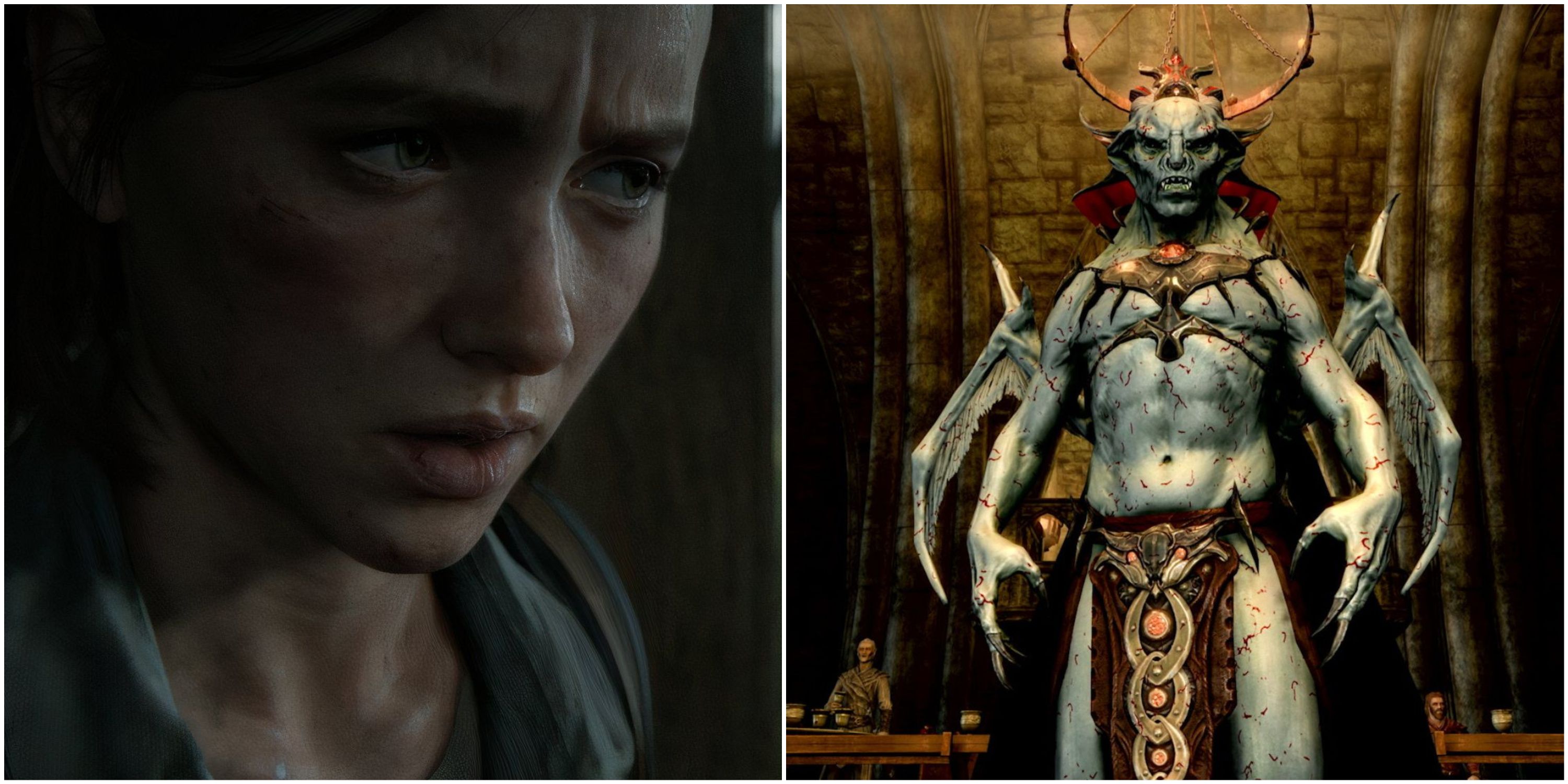
/cdn.vox-cdn.com/uploads/chorus_asset/file/25715032/aa1_102024_xrayrecaps_standard_hero_v1_600kb_2000x1125.jpg)
